Mammals Of Argentina on:
[Wikipedia]
[Google]
[Amazon]
This is a list of the native mammal species recorded in Argentina. As of January 2020, the list contains 402 mammal species from

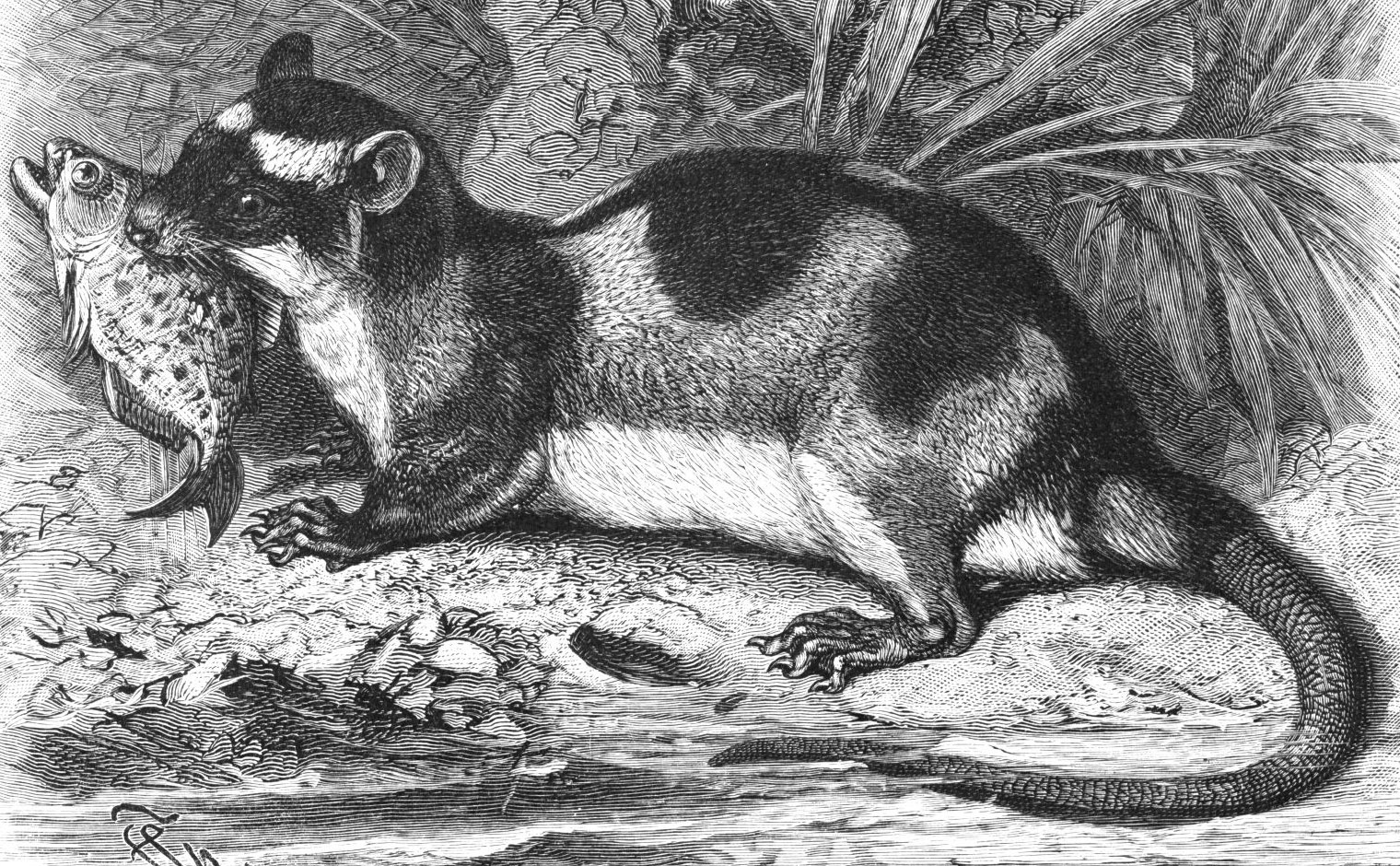



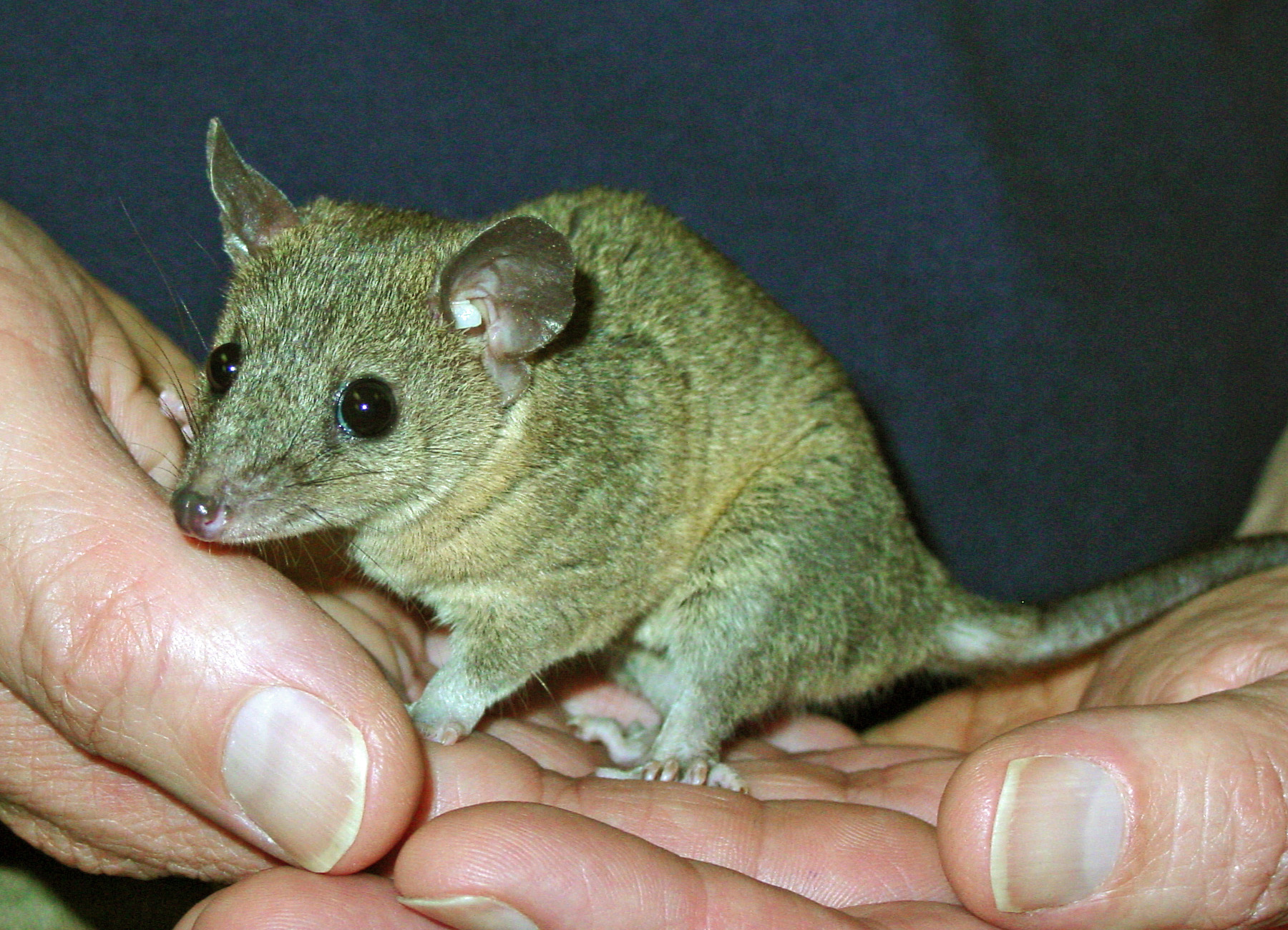






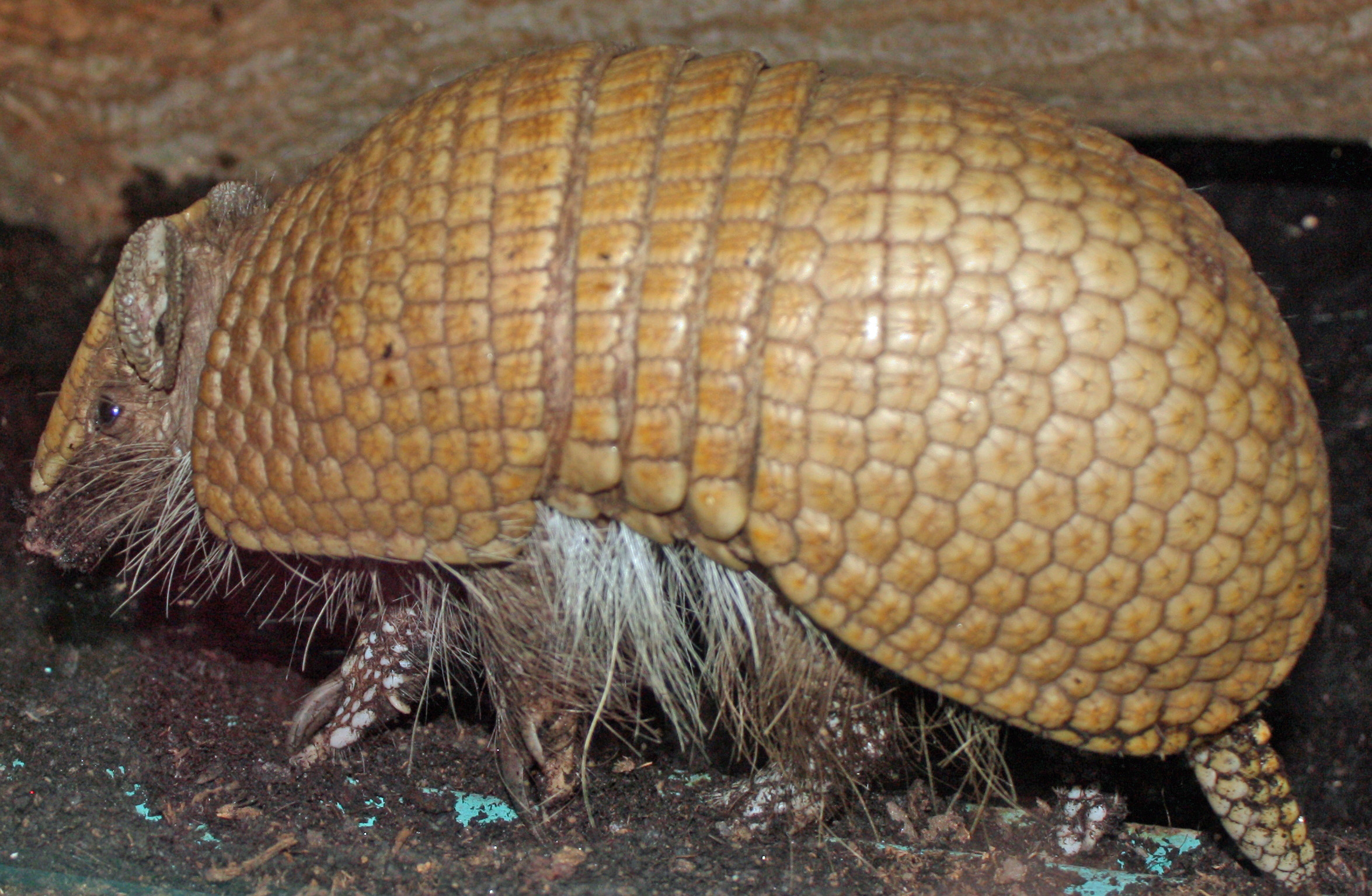


 The order Pilosa is extant only in the Americas and includes the anteaters,
The order Pilosa is extant only in the Americas and includes the anteaters,


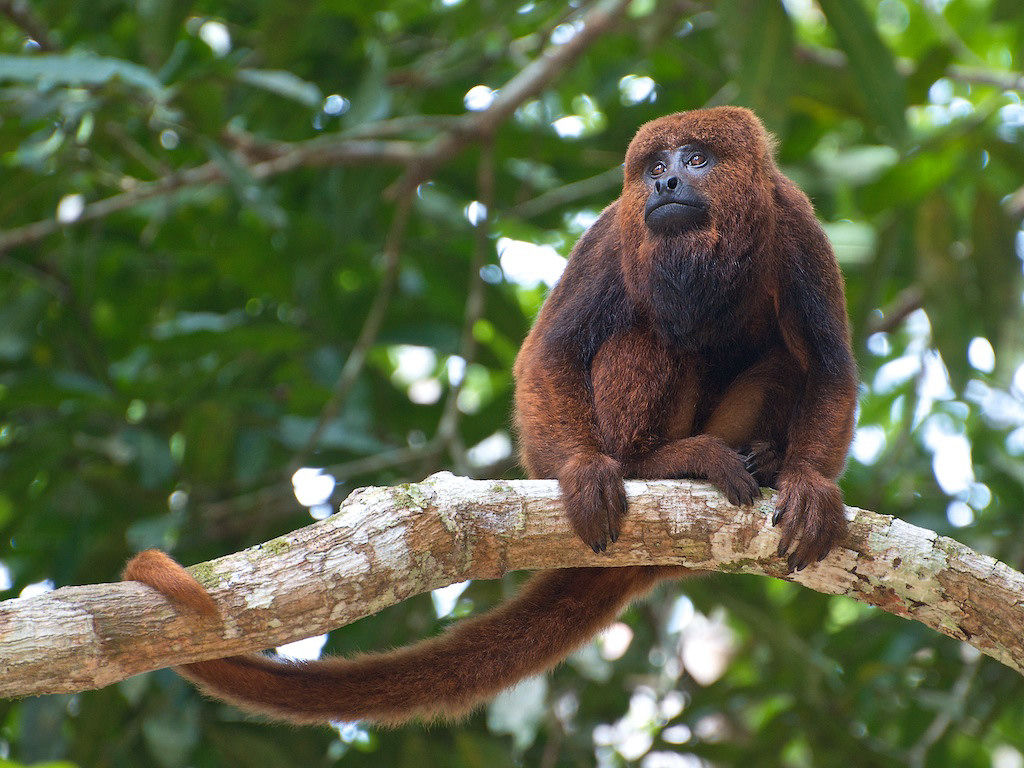 The order Primates contains
The order Primates contains


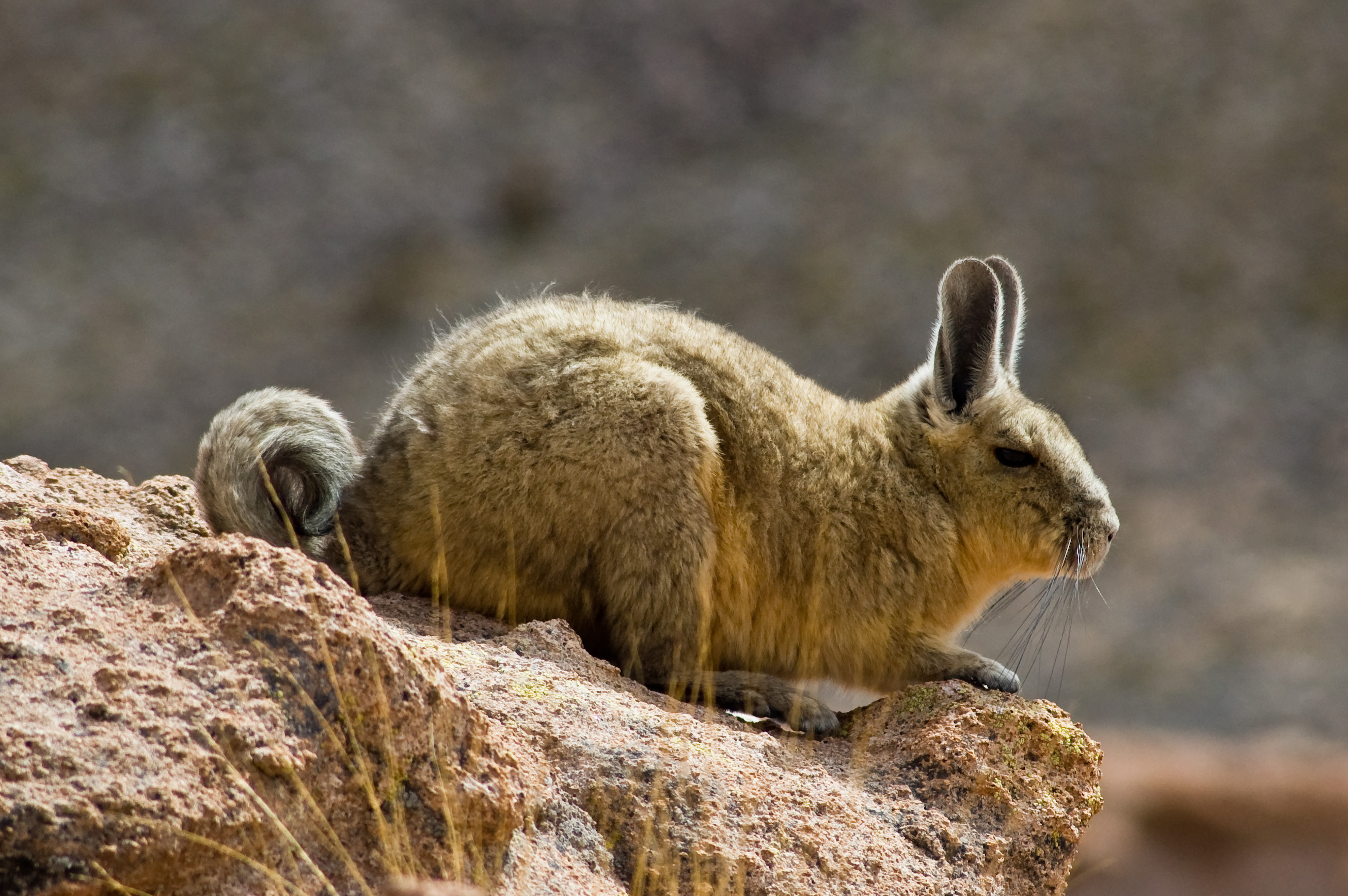


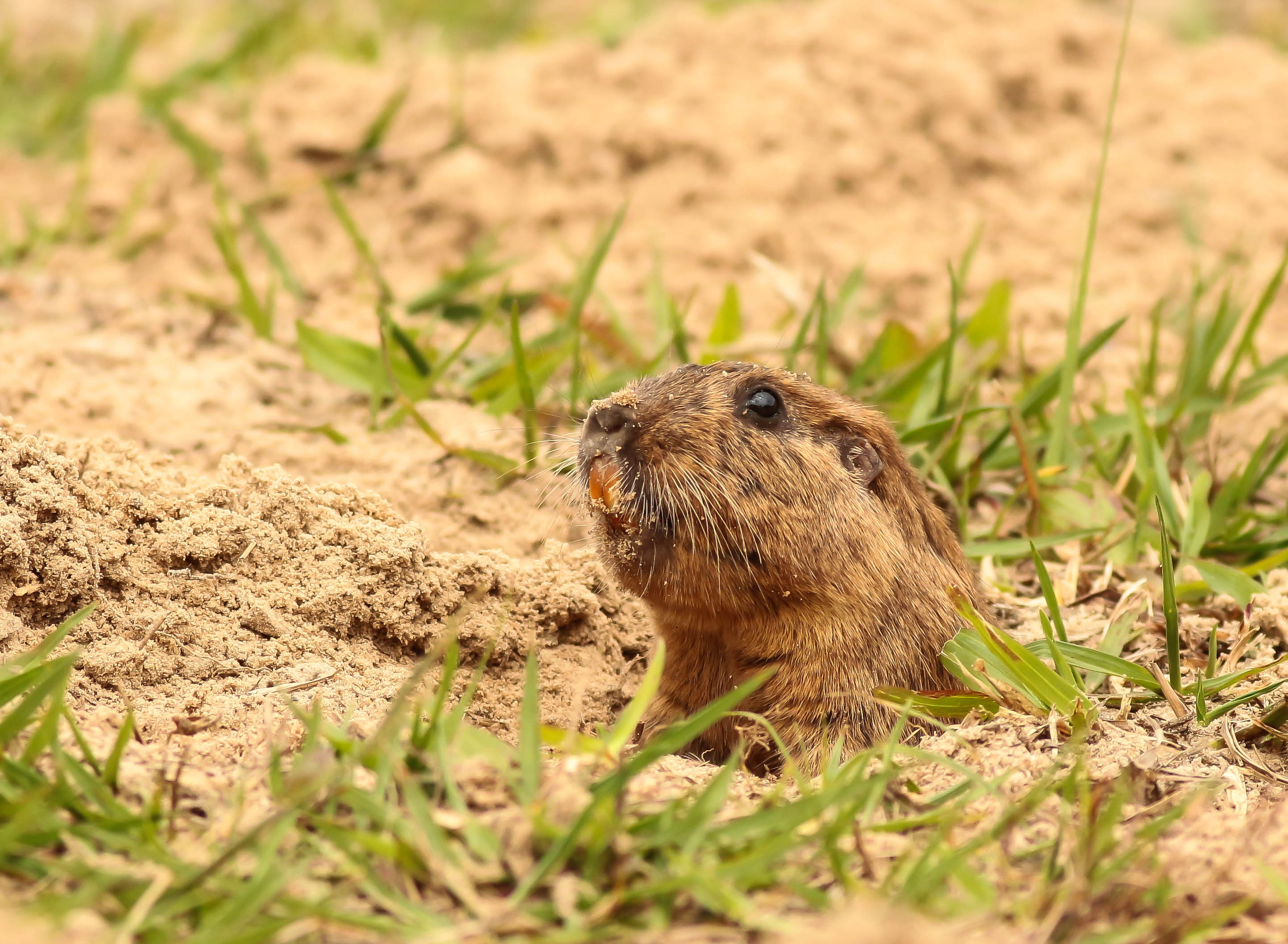

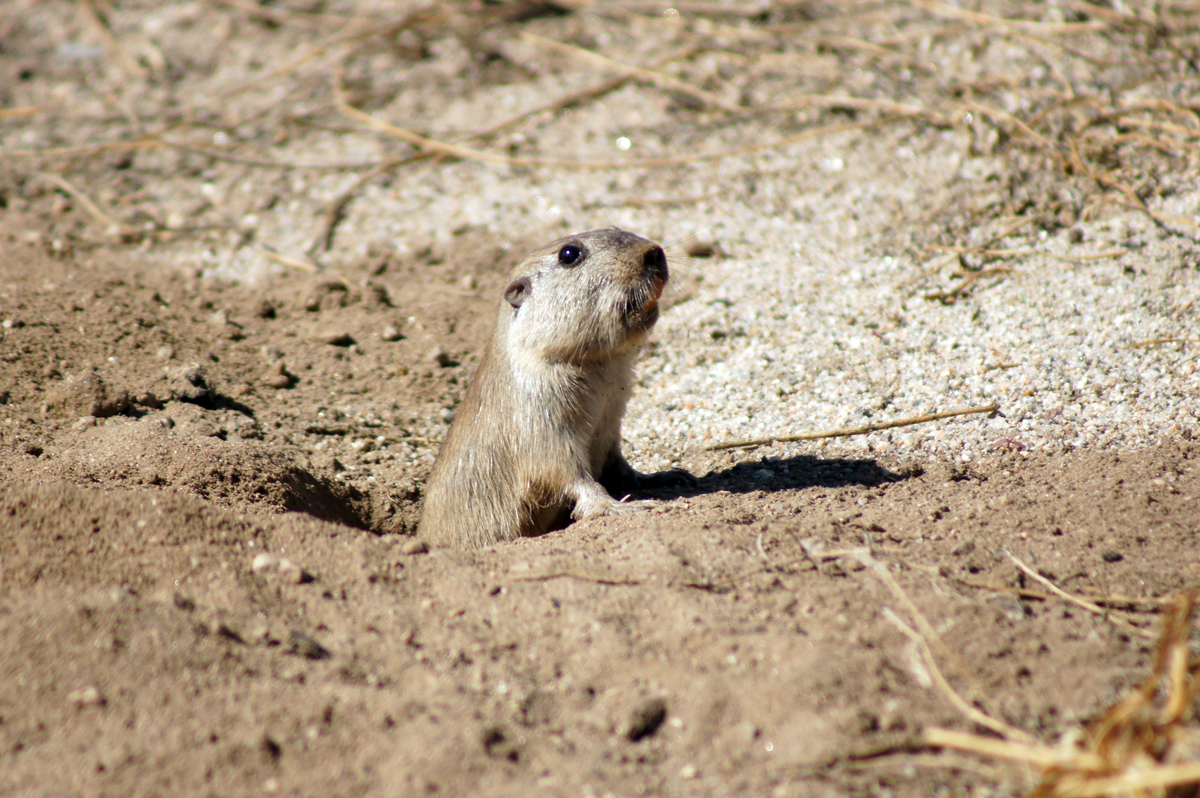

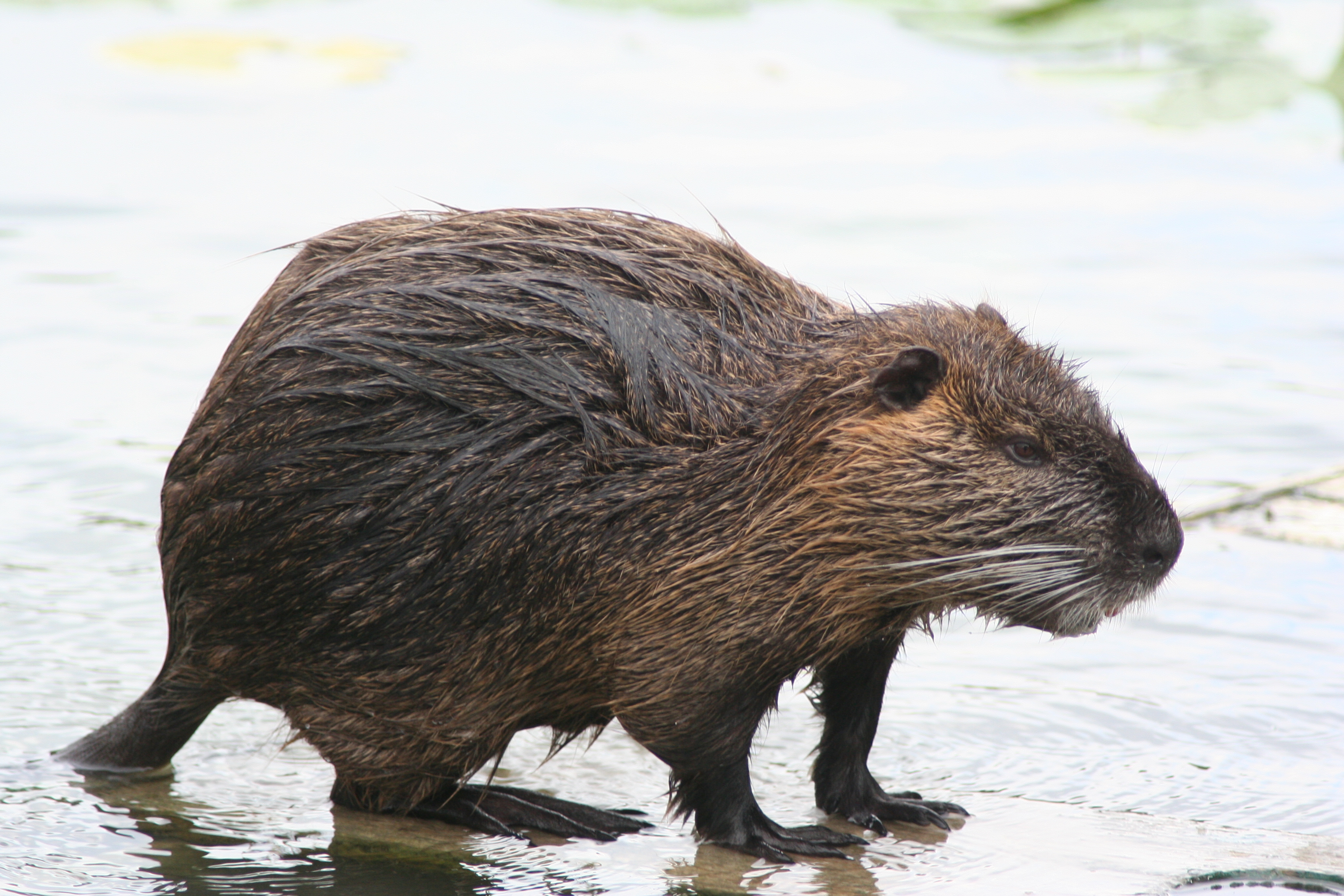 Rodents make up the largest order of mammals, with over 40 percent of mammalian species. They have two
Rodents make up the largest order of mammals, with over 40 percent of mammalian species. They have two 
 *Suborder:
*Suborder: 
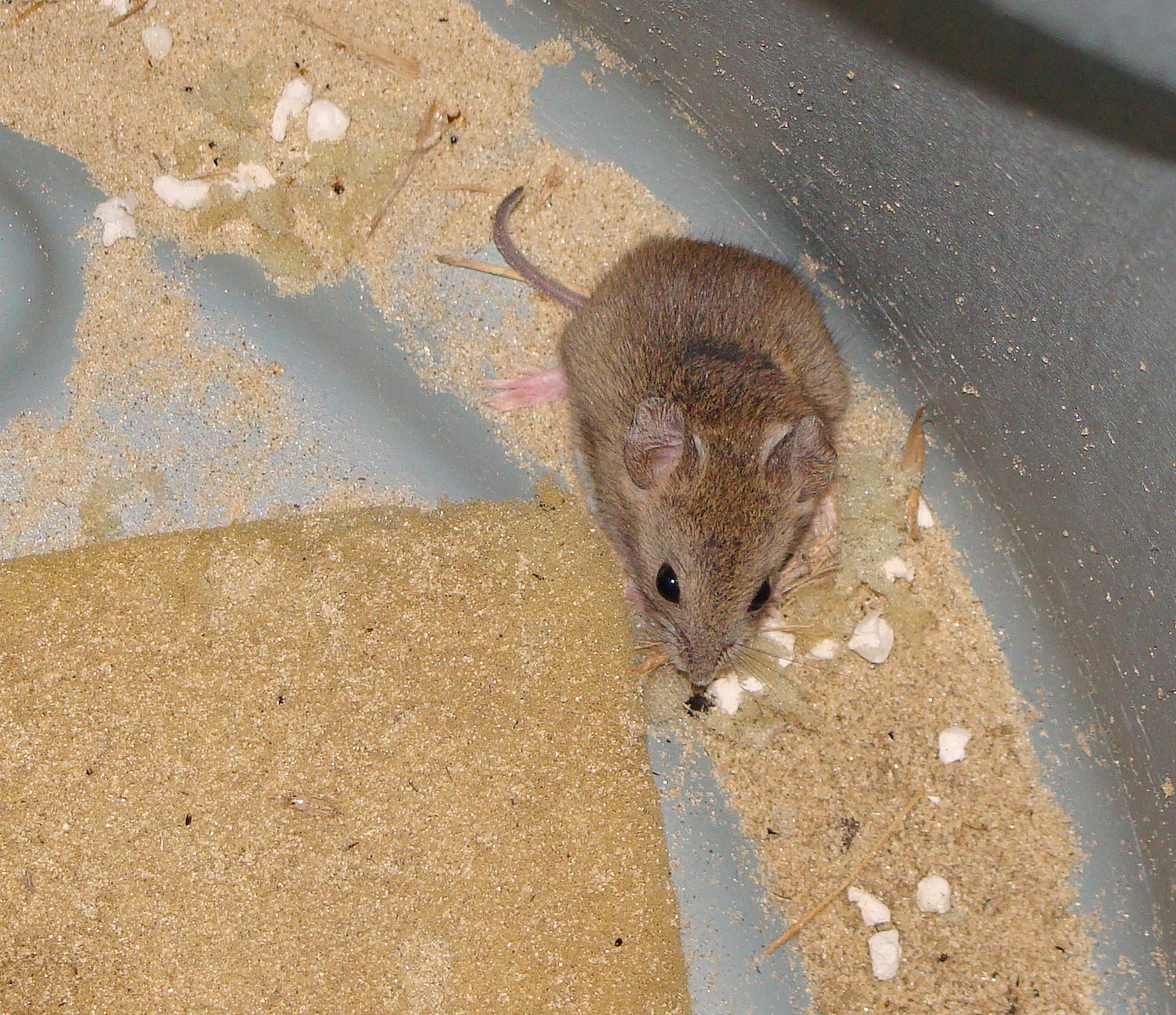


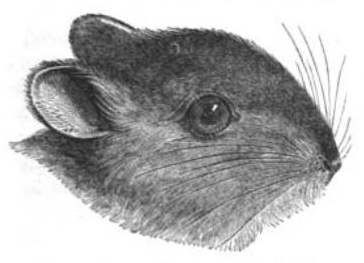 **Family:
**Family:
 The lagomorphs comprise two families,
The lagomorphs comprise two families,
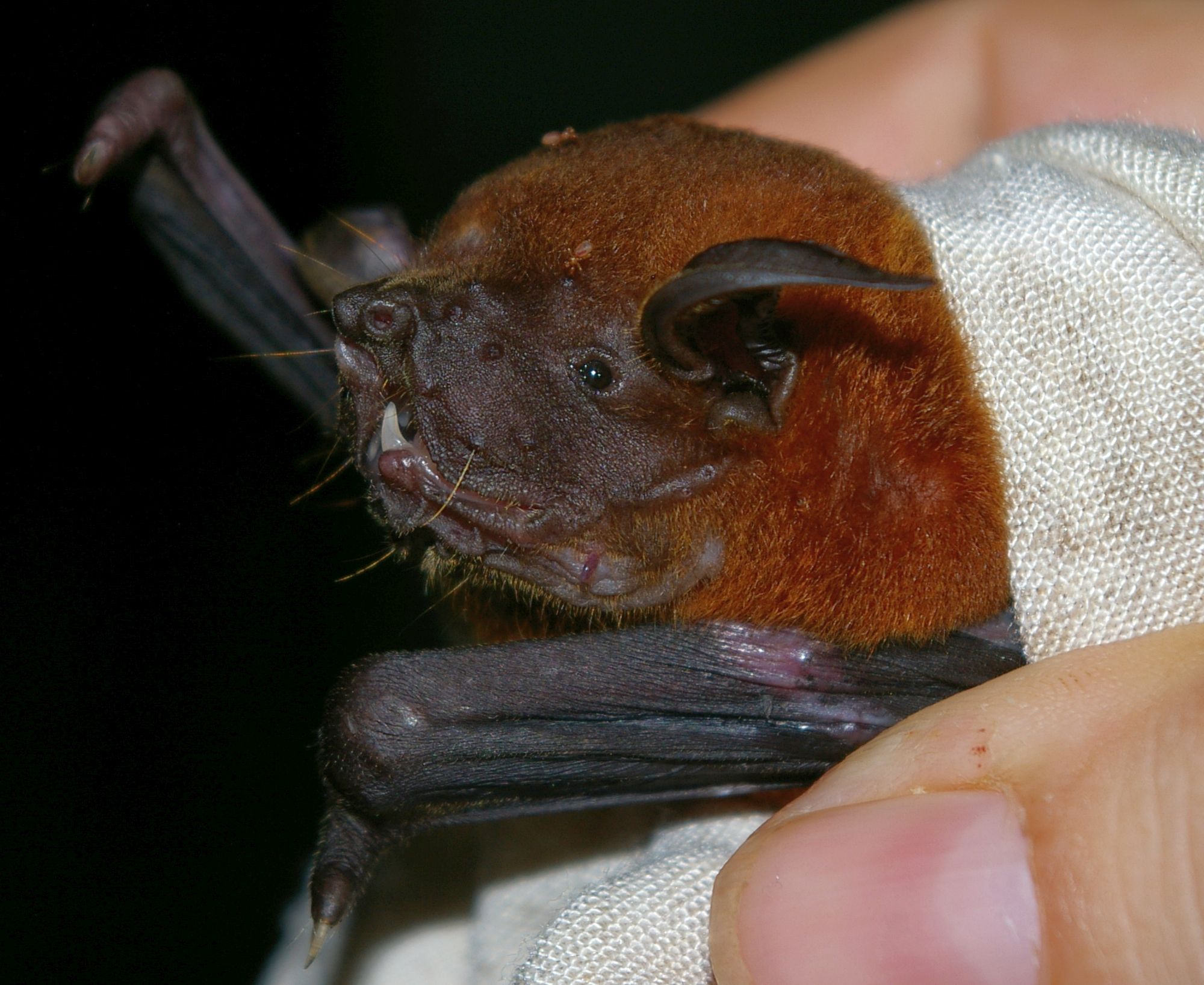




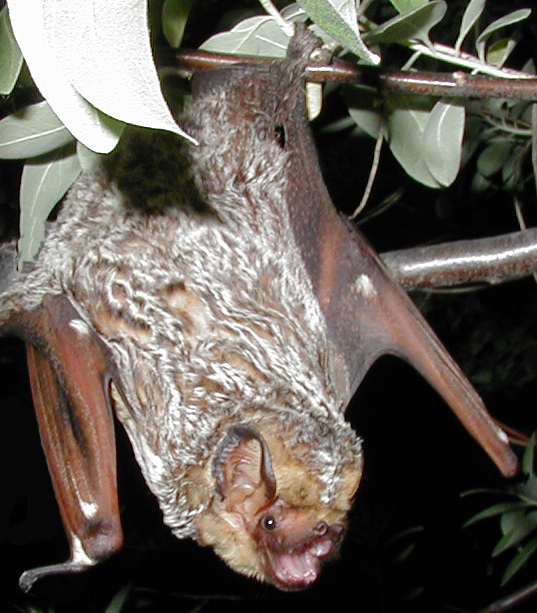



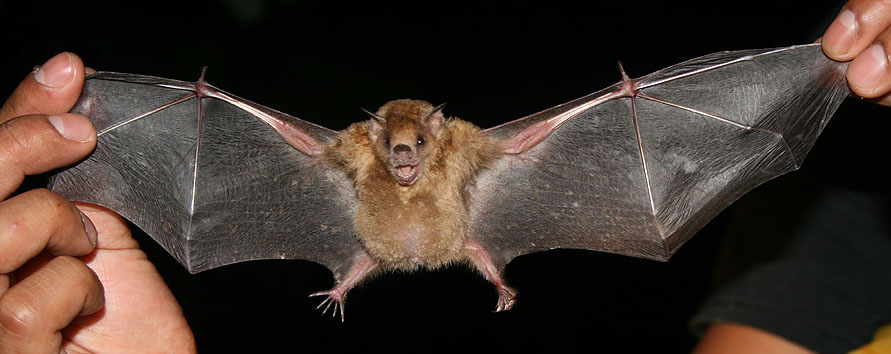

 The bats' most distinguishing feature is that their forelimbs are developed as wings, making them the only mammals capable of flight. Bat species account for about 20% of all mammals.
*Family: Noctilionidae
**Genus: '' Noctilio''
*** Lesser bulldog bat, ''N. albiventris'' LC
***
The bats' most distinguishing feature is that their forelimbs are developed as wings, making them the only mammals capable of flight. Bat species account for about 20% of all mammals.
*Family: Noctilionidae
**Genus: '' Noctilio''
*** Lesser bulldog bat, ''N. albiventris'' LC
***
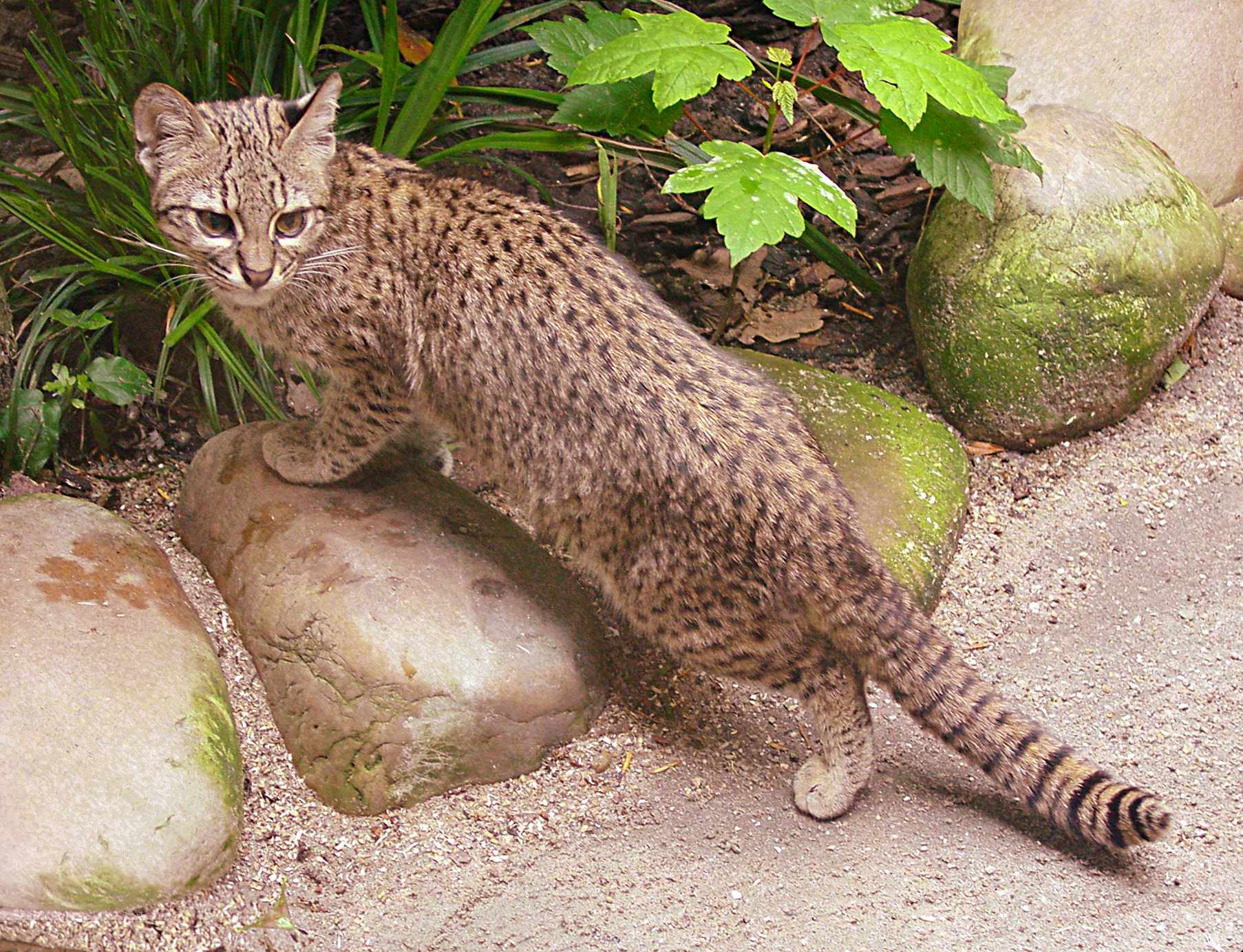



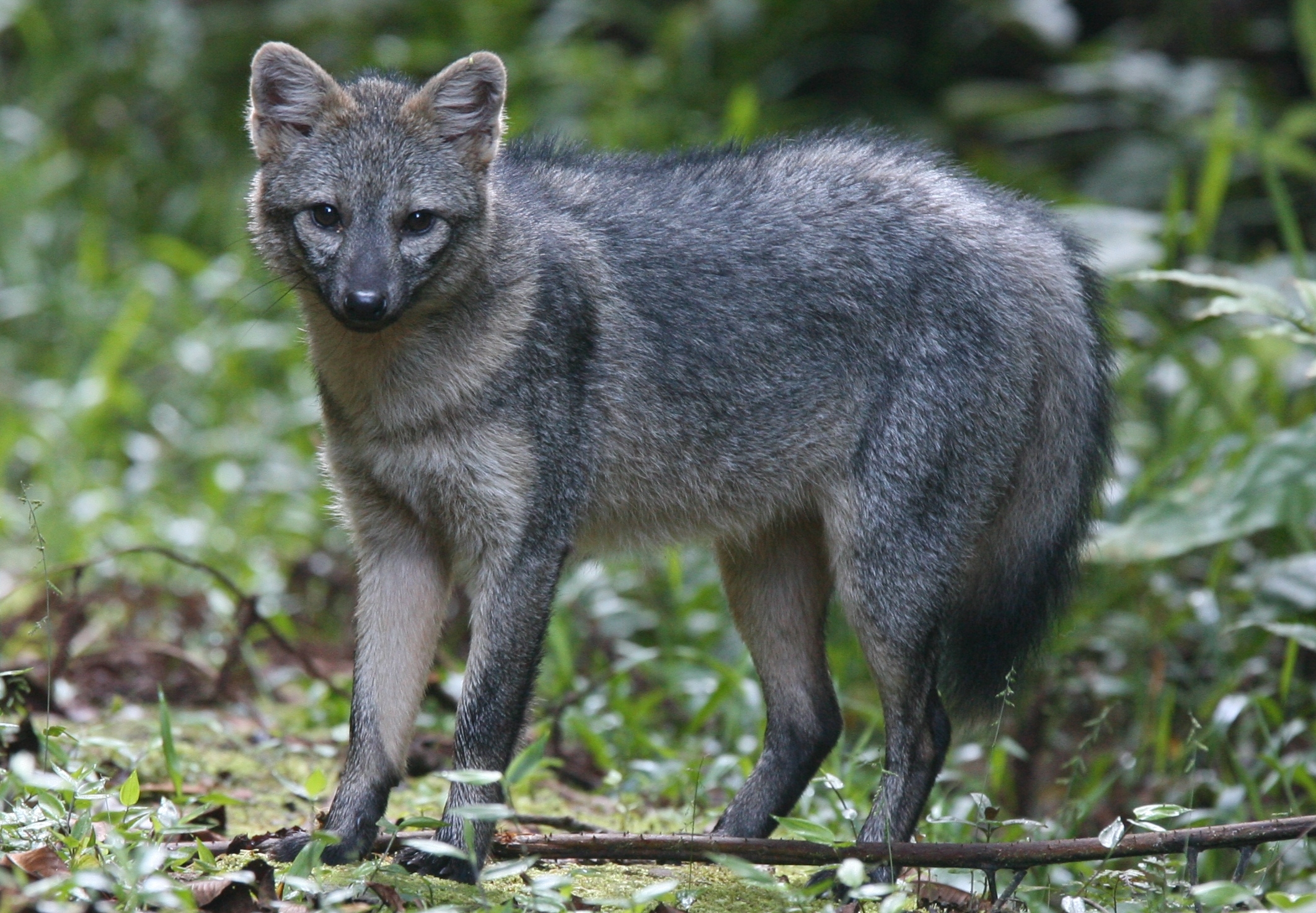
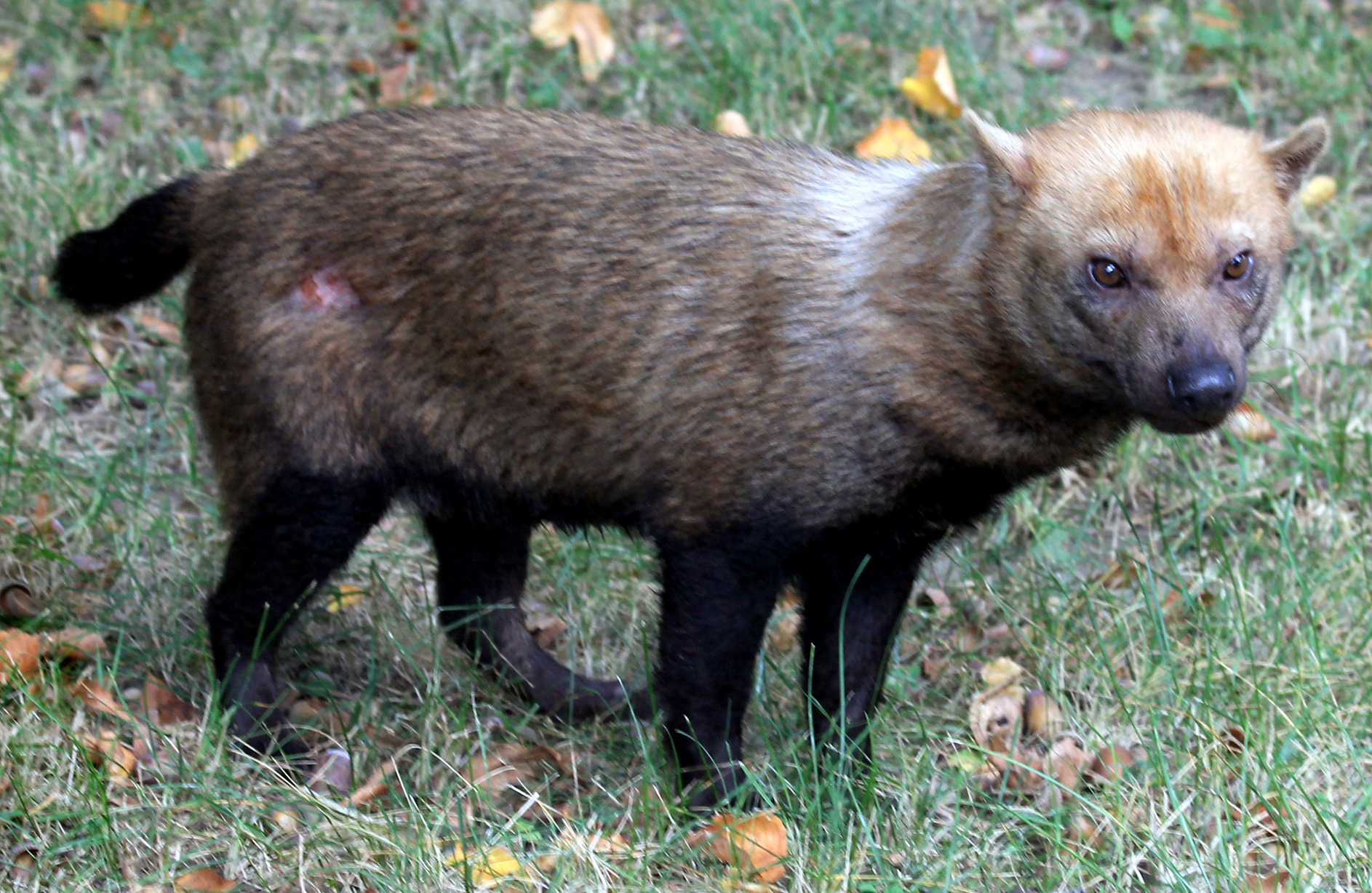




 There are over 260 species of carnivorans, the majority of which feed primarily on meat. They have a characteristic skull shape and dentition.
*Suborder:
There are over 260 species of carnivorans, the majority of which feed primarily on meat. They have a characteristic skull shape and dentition.
*Suborder:
 The odd-toed ungulates are browsing and grazing mammals. They are usually large to very large, and have relatively simple stomachs and a large middle toe. South America once had a great diversity of Meridiungulata, ungulates of native origin, but these dwindled after the Great American Interchange, interchange with North America, and disappeared entirely following the arrival of humans. Sequencing of collagen from fossils of one recently extinct species each of notoungulates and litopterns has indicated that these orders comprise a sister group to the perissodactyls.
*Family: Tapiridae (tapirs)
**Genus: ''Tapirus''
*** South American tapir, Lowland tapir, ''Tapirus terrestris'' VU
The odd-toed ungulates are browsing and grazing mammals. They are usually large to very large, and have relatively simple stomachs and a large middle toe. South America once had a great diversity of Meridiungulata, ungulates of native origin, but these dwindled after the Great American Interchange, interchange with North America, and disappeared entirely following the arrival of humans. Sequencing of collagen from fossils of one recently extinct species each of notoungulates and litopterns has indicated that these orders comprise a sister group to the perissodactyls.
*Family: Tapiridae (tapirs)
**Genus: ''Tapirus''
*** South American tapir, Lowland tapir, ''Tapirus terrestris'' VU


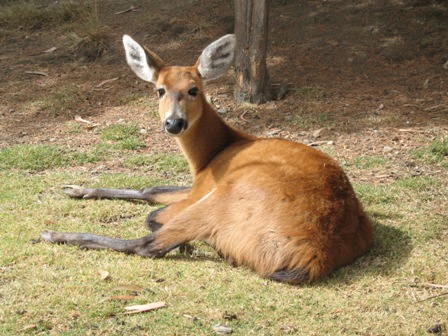
 The weight of even-toed ungulates is borne about equally by the third and fourth toes, rather than mostly or entirely by the third as in perissodactyls. There are about 220 noncetacean artiodactyl species, including many that are of great economic importance to humans.
*Family: Bovidae (bovids)
**Subfamily: Antilopinae
***Genus: ''Antilope''
**** Blackbuck, ''A. cervicapra'' introduced
**Subfamily: Caprinae
***Genus: ''Hemitragus''
**** Himalayan tahr, ''H. jemlahicus'' introduced, possibly extirpatedDPIPWE (2011) Pest Risk Assessment: Himalayan tahr (''Hemitragus jemlahicus''). Department of Primary Industries, Parks, Water and Environment. Hobart, Tasmania.
*Family: Tayassuidae (peccaries)
**Genus: ''Catagonus''
*** Chacoan peccary, ''Catagonus wagneri'' EN
**Genus: ''Dicotyles''
*** Collared peccary, ''Dicotyles tajacu'' LC
**Genus: ''Tayassu''
*** White-lipped peccary, ''Tayassu pecari'' VU
*Family: Camelidae (camels, llamas)
**Genus: ''Lama (genus), Lama''
*** Guanaco, ''Lama guanicoe'' LC
*** Vicuña, ''Lama vicugna'' LC
*Family: Cervidae (deer)
**Subfamily: Capreolinae
***Genus: ''Blastocerus''
**** Marsh deer, ''Blastocerus dichotomus'' VU
***Genus: ''Hippocamelus''
**** Taruca, ''Hippocamelus antisensis'' VU
**** South Andean deer, ''Hippocamelus bisulcus'' EN
***Genus: ''Brocket deer, Mazama''
**** Red brocket, ''Mazama americana'' DD
**** Gray brocket, ''Mazama gouazoupira'' LC
**** Pygmy brocket, ''Mazama nana'' VU
***Genus: ''Odocoileus''
**** Mule deer, ''O. hemionus'' LC introduced
***Genus: ''Ozotoceros''
**** Pampas deer, ''Ozotoceros bezoarticus'' NT
***Genus: ''Pudú''
**** Southern pudú, ''P. puda'' NT
**Subfamily: Cervinae
***Genus: ''Dama (genus), Dama''
**** European fallow deer, ''D. dama'' LC introduced
The weight of even-toed ungulates is borne about equally by the third and fourth toes, rather than mostly or entirely by the third as in perissodactyls. There are about 220 noncetacean artiodactyl species, including many that are of great economic importance to humans.
*Family: Bovidae (bovids)
**Subfamily: Antilopinae
***Genus: ''Antilope''
**** Blackbuck, ''A. cervicapra'' introduced
**Subfamily: Caprinae
***Genus: ''Hemitragus''
**** Himalayan tahr, ''H. jemlahicus'' introduced, possibly extirpatedDPIPWE (2011) Pest Risk Assessment: Himalayan tahr (''Hemitragus jemlahicus''). Department of Primary Industries, Parks, Water and Environment. Hobart, Tasmania.
*Family: Tayassuidae (peccaries)
**Genus: ''Catagonus''
*** Chacoan peccary, ''Catagonus wagneri'' EN
**Genus: ''Dicotyles''
*** Collared peccary, ''Dicotyles tajacu'' LC
**Genus: ''Tayassu''
*** White-lipped peccary, ''Tayassu pecari'' VU
*Family: Camelidae (camels, llamas)
**Genus: ''Lama (genus), Lama''
*** Guanaco, ''Lama guanicoe'' LC
*** Vicuña, ''Lama vicugna'' LC
*Family: Cervidae (deer)
**Subfamily: Capreolinae
***Genus: ''Blastocerus''
**** Marsh deer, ''Blastocerus dichotomus'' VU
***Genus: ''Hippocamelus''
**** Taruca, ''Hippocamelus antisensis'' VU
**** South Andean deer, ''Hippocamelus bisulcus'' EN
***Genus: ''Brocket deer, Mazama''
**** Red brocket, ''Mazama americana'' DD
**** Gray brocket, ''Mazama gouazoupira'' LC
**** Pygmy brocket, ''Mazama nana'' VU
***Genus: ''Odocoileus''
**** Mule deer, ''O. hemionus'' LC introduced
***Genus: ''Ozotoceros''
**** Pampas deer, ''Ozotoceros bezoarticus'' NT
***Genus: ''Pudú''
**** Southern pudú, ''P. puda'' NT
**Subfamily: Cervinae
***Genus: ''Dama (genus), Dama''
**** European fallow deer, ''D. dama'' LC introduced





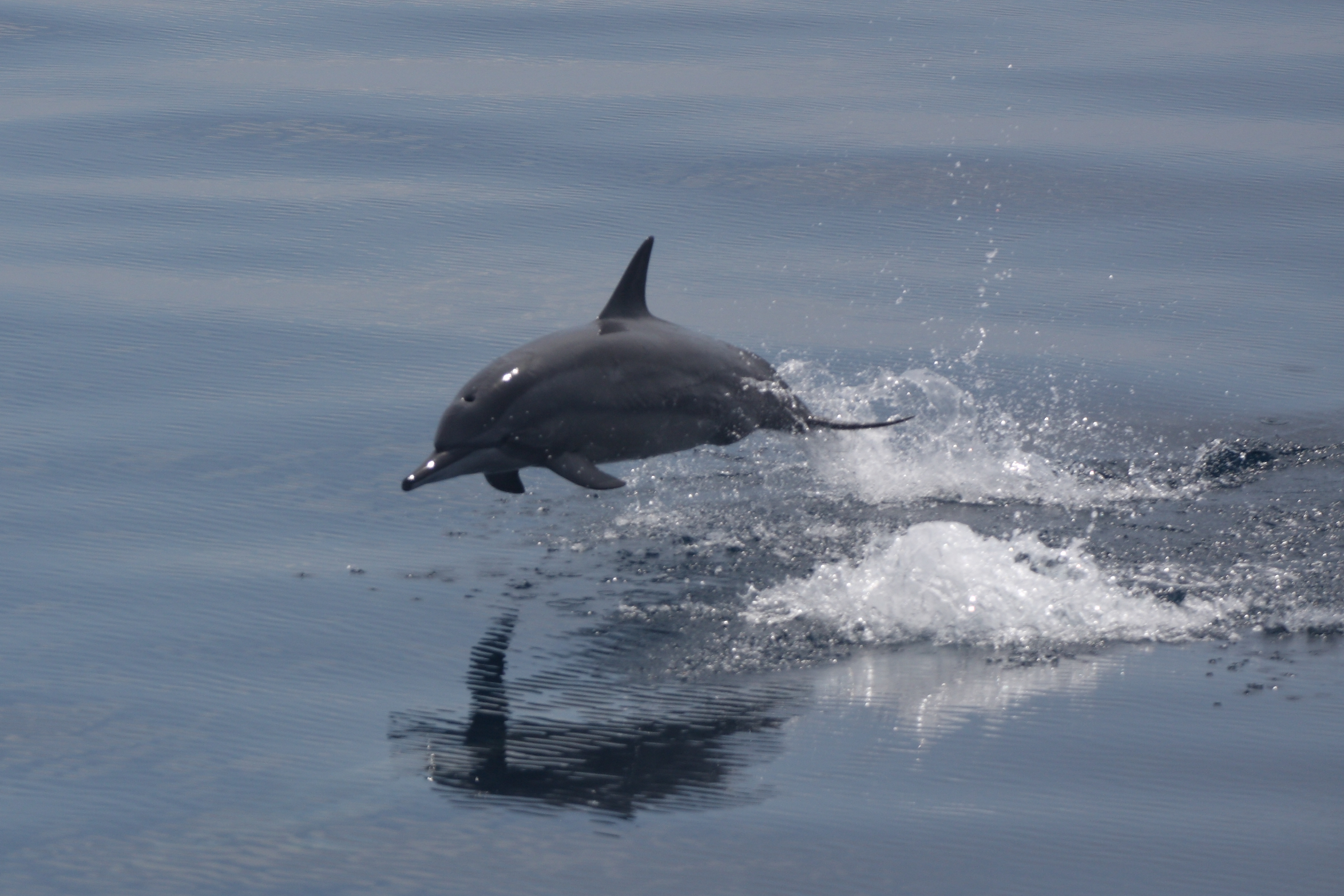





 The infraorder Cetacea includes whales, dolphins and porpoises. They are the mammals most fully aquatic adaptation, adapted to aquatic life with a spindle-shaped nearly hairless body, protected by a thick layer of blubber, and forelimbs and tail modified to provide propulsion underwater. Their closest extant relatives are the Hippopotamidae, hippos, which are artiodactyls, from which cetaceans descended; cetaceans are thus also artiodactyls.
*Parvorder: Mysticeti
**Family: Balaenidae
***Genus: ''Eubalaena''
**** Southern right whale, ''Eubalaena australis'' LC
**Family: Balaenopteridae
***Subfamily: Balaenopterinae
****Genus: ''Balaenoptera''
***** Common minke whale, ''Balaenoptera acutorostrata'' LC
***** Antarctic minke whale, ''Balaenoptera bonaerensis'' NT
***** Sei whale, ''Balaenoptera borealis'' EN
***** Bryde's whale, ''Balaenoptera edeni'' NE
***** Blue whale, ''Balaenoptera musculus'' EN
***** Fin whale, ''Balaenoptera physalus'' VU
***Subfamily: Megapterinae
****Genus: ''Megaptera''
***** Humpback whale, ''Megaptera novaeangliae'' LC
**Family: Neobalaenidae
***Genus: ''Caperea''
**** Pygmy right whale, ''Caperea marginata'' LC
*Parvorder: Odontoceti
**Family: Physeteridae
***Genus: ''Physeter''
**** Sperm whale, ''Physeter macrocephalus'' VU
**Family: Kogiidae
***Genus: ''Kogia''
**** Pygmy sperm whale, ''Kogia breviceps'' DD
**** Dwarf sperm whale, ''Kogia sima'' DD
**Family: Ziphidae
***Genus: ''Ziphius''
**** Cuvier's beaked whale, ''Ziphius cavirostris'' LC
***Genus: ''Berardius''
**** Arnoux's beaked whale, ''Berardius arnuxii'' DD
***Genus: ''Tasmacetus''
**** Shepherd's beaked whale, ''Tasmacetus shepherdi'' DD
***Subfamily: Hyperoodontinae
****Genus: ''Hyperoodon''
***** Southern bottlenose whale, ''Hyperoodon planifrons'' LC
****Genus: ''Mesoplodon''
***** Andrews' beaked whale, ''Mesoplodon bowdoini'' DD
***** Gray's beaked whale, ''Mesoplodon grayi'' DD
***** Hector's beaked whale, ''Mesoplodon hectori'' DD
***** Strap-toothed whale, ''Mesoplodon layardii'' DD
**Superfamily: Inioidea (river dolphins)
***Family: Pontoporiidae
****Genus: ''La Plata dolphin, Pontoporia''
***** La Plata dolphin, ''Pontoporia blainvillei'' VU
**Superfamily: Delphinoidea
***Family: Phocoenidae (porpoises)
****Genus: ''Phocoena''
***** Spectacled porpoise, ''Phocoena dioptrica'' LC
***** Burmeister's porpoise, ''Phocoena spinipinnis'' NT
***Family: Delphinidae (marine dolphins)
****Genus: ''Cephalorhynchus''
***** Commerson's dolphin, ''Cephalorhynchus commersonii'' LC
***** Chilean dolphin, ''Cephalorhynchus eutropia'' NT
****Genus: ''Tursiops''
***** Common bottlenose dolphin, ''Tursiops truncatus'' LC
****Genus: ''Stenella''
***** Pantropical spotted dolphin, ''Stenella attenuata'' LC
***** Striped dolphin, ''Stenella coeruleoalba'' LC
***** Spinner dolphin, ''Stenella longirostris'' LC
****Genus: ''Common dolphin, Delphinus''
***** Long-beaked common dolphin, ''Delphinus capensis'' DD
***** Short-beaked common dolphin, ''Delphinus delphis'' LC
****Genus: ''Lagenodelphis''
***** Fraser's dolphin, ''Lagenodelphis hosei'' LC
****Genus: ''Lissodelphis''
***** Southern right whale dolphin, ''Lissodelphis peronii'' LC
****Genus: ''Lagenorhynchus''
***** Peale's dolphin, ''Lagenorhynchus australis'' LC
***** Hourglass dolphin, ''Lagenorhynchus cruciger'' LC
***** Dusky dolphin, ''Lagenorhynchus obscurus'' LC
****Genus: ''Grampus (genus), Grampus''
***** Risso's dolphin, ''Grampus griseus'' LC
****Genus: ''Orcinus''
***** Orca, ''Orcinus orca'' DD
****Genus: ''Pseudorca''
***** False killer whale, ''Pseudorca crassidens'' NT
****Genus: ''Globicephala''
***** Long-finned pilot whale, ''Globicephala melas'' LC
The infraorder Cetacea includes whales, dolphins and porpoises. They are the mammals most fully aquatic adaptation, adapted to aquatic life with a spindle-shaped nearly hairless body, protected by a thick layer of blubber, and forelimbs and tail modified to provide propulsion underwater. Their closest extant relatives are the Hippopotamidae, hippos, which are artiodactyls, from which cetaceans descended; cetaceans are thus also artiodactyls.
*Parvorder: Mysticeti
**Family: Balaenidae
***Genus: ''Eubalaena''
**** Southern right whale, ''Eubalaena australis'' LC
**Family: Balaenopteridae
***Subfamily: Balaenopterinae
****Genus: ''Balaenoptera''
***** Common minke whale, ''Balaenoptera acutorostrata'' LC
***** Antarctic minke whale, ''Balaenoptera bonaerensis'' NT
***** Sei whale, ''Balaenoptera borealis'' EN
***** Bryde's whale, ''Balaenoptera edeni'' NE
***** Blue whale, ''Balaenoptera musculus'' EN
***** Fin whale, ''Balaenoptera physalus'' VU
***Subfamily: Megapterinae
****Genus: ''Megaptera''
***** Humpback whale, ''Megaptera novaeangliae'' LC
**Family: Neobalaenidae
***Genus: ''Caperea''
**** Pygmy right whale, ''Caperea marginata'' LC
*Parvorder: Odontoceti
**Family: Physeteridae
***Genus: ''Physeter''
**** Sperm whale, ''Physeter macrocephalus'' VU
**Family: Kogiidae
***Genus: ''Kogia''
**** Pygmy sperm whale, ''Kogia breviceps'' DD
**** Dwarf sperm whale, ''Kogia sima'' DD
**Family: Ziphidae
***Genus: ''Ziphius''
**** Cuvier's beaked whale, ''Ziphius cavirostris'' LC
***Genus: ''Berardius''
**** Arnoux's beaked whale, ''Berardius arnuxii'' DD
***Genus: ''Tasmacetus''
**** Shepherd's beaked whale, ''Tasmacetus shepherdi'' DD
***Subfamily: Hyperoodontinae
****Genus: ''Hyperoodon''
***** Southern bottlenose whale, ''Hyperoodon planifrons'' LC
****Genus: ''Mesoplodon''
***** Andrews' beaked whale, ''Mesoplodon bowdoini'' DD
***** Gray's beaked whale, ''Mesoplodon grayi'' DD
***** Hector's beaked whale, ''Mesoplodon hectori'' DD
***** Strap-toothed whale, ''Mesoplodon layardii'' DD
**Superfamily: Inioidea (river dolphins)
***Family: Pontoporiidae
****Genus: ''La Plata dolphin, Pontoporia''
***** La Plata dolphin, ''Pontoporia blainvillei'' VU
**Superfamily: Delphinoidea
***Family: Phocoenidae (porpoises)
****Genus: ''Phocoena''
***** Spectacled porpoise, ''Phocoena dioptrica'' LC
***** Burmeister's porpoise, ''Phocoena spinipinnis'' NT
***Family: Delphinidae (marine dolphins)
****Genus: ''Cephalorhynchus''
***** Commerson's dolphin, ''Cephalorhynchus commersonii'' LC
***** Chilean dolphin, ''Cephalorhynchus eutropia'' NT
****Genus: ''Tursiops''
***** Common bottlenose dolphin, ''Tursiops truncatus'' LC
****Genus: ''Stenella''
***** Pantropical spotted dolphin, ''Stenella attenuata'' LC
***** Striped dolphin, ''Stenella coeruleoalba'' LC
***** Spinner dolphin, ''Stenella longirostris'' LC
****Genus: ''Common dolphin, Delphinus''
***** Long-beaked common dolphin, ''Delphinus capensis'' DD
***** Short-beaked common dolphin, ''Delphinus delphis'' LC
****Genus: ''Lagenodelphis''
***** Fraser's dolphin, ''Lagenodelphis hosei'' LC
****Genus: ''Lissodelphis''
***** Southern right whale dolphin, ''Lissodelphis peronii'' LC
****Genus: ''Lagenorhynchus''
***** Peale's dolphin, ''Lagenorhynchus australis'' LC
***** Hourglass dolphin, ''Lagenorhynchus cruciger'' LC
***** Dusky dolphin, ''Lagenorhynchus obscurus'' LC
****Genus: ''Grampus (genus), Grampus''
***** Risso's dolphin, ''Grampus griseus'' LC
****Genus: ''Orcinus''
***** Orca, ''Orcinus orca'' DD
****Genus: ''Pseudorca''
***** False killer whale, ''Pseudorca crassidens'' NT
****Genus: ''Globicephala''
***** Long-finned pilot whale, ''Globicephala melas'' LC
Argentina
Argentina (), officially the Argentine Republic ( es, link=no, República Argentina), is a country in the southern half of South America. Argentina covers an area of , making it the second-largest country in South America after Brazil, th ...
, of which one is extinct, seven are critically endangered, seventeen are endangered, sixteen are vulnerable, and thirty are near threatened.
The following tags are used to highlight each species' conservation status as assessed by the International Union for Conservation of Nature
The International Union for Conservation of Nature (IUCN; officially International Union for Conservation of Nature and Natural Resources) is an international organization working in the field of nature conservation and sustainable use of natu ...
; those on the left are used here, those in the second column in some other articles:
Subclass:
Theria
Theria (; Greek: , wild beast) is a subclass of mammals amongst the Theriiformes. Theria includes the eutherians (including the placental mammals) and the metatherians (including the marsupials) but excludes the egg-laying monotremes.
Ch ...
Infraclass:
Metatheria
Metatheria is a mammalian clade that includes all mammals more closely related to marsupials than to placentals. First proposed by Thomas Henry Huxley in 1880, it is a more inclusive group than the marsupials; it contains all marsupials as wel ...
Superorder:
Ameridelphia
Ameridelphia is traditionally a superorder that includes all marsupials living in the Americas except for the Monito del monte (''Dromiciops''). It is now regarded as a paraphyletic group.
Orders
The orders within this group are listed below:
* ...







=Order: Didelphimorphia (common opossums)
= ---- Didelphimorphia is the order of common opossums of theWestern Hemisphere
The Western Hemisphere is the half of the planet Earth that lies west of the prime meridian (which crosses Greenwich, London, United Kingdom) and east of the antimeridian. The other half is called the Eastern Hemisphere. Politically, the term We ...
. Opossums probably diverged from the basic South America
South America is a continent entirely in the Western Hemisphere and mostly in the Southern Hemisphere, with a relatively small portion in the Northern Hemisphere at the northern tip of the continent. It can also be described as the southe ...
n marsupial
Marsupials are any members of the mammalian infraclass Marsupialia. All extant marsupials are endemic to Australasia, Wallacea and the Americas. A distinctive characteristic common to most of these species is that the young are carried in a po ...
s in the late Cretaceous
The Cretaceous ( ) is a geological period that lasted from about 145 to 66 million years ago (Mya). It is the third and final period of the Mesozoic Era, as well as the longest. At around 79 million years, it is the longest geological period of th ...
or early Paleocene
The Paleocene, ( ) or Palaeocene, is a geological epoch (geology), epoch that lasted from about 66 to 56 mya (unit), million years ago (mya). It is the first epoch of the Paleogene Period (geology), Period in the modern Cenozoic Era (geology), E ...
. They are small to medium-sized marsupials, about the size of a large house cat
The cat (''Felis catus'') is a domestic species of small carnivorous mammal. It is the only domesticated species in the family Felidae and is commonly referred to as the domestic cat or house cat to distinguish it from the wild members of ...
, with a long snout and prehensile
Prehensility is the quality of an appendage or organ (anatomy), organ that has Adaptation (biology), adapted for grasping or holding. The word is derived from the Latin term ''prehendere'', meaning "to grasp". The ability to grasp is likely der ...
tail.
*Family: Didelphidae (American opossums)
**Subfamily: Caluromyinae
Caluromyinae is a subfamily of opossums. It includes the extant genera '' Caluromys'' and '' Caluromysiops'', as well as the extinct '' Pachybiotherium''. Until recently, the genus ''Glironia'' was also included. It has sometimes been classed as ...
***Genus: '' Caluromys''
**** Brown-eared woolly opossum
The brown-eared woolly opossum (''Caluromys lanatus''), also known as the western woolly opossum, is an opossum from South America. It was first described by German naturalist Ignaz von Olfers in 1818. The opossum is characterized by a brown to ...
, ''C. lanatus'' LC
**Subfamily: Didelphinae
The Didelphinae are a subfamily of opossums consisting of 15 genera and 123 species. Specimens have been collected throughout the Americas, but are predominant in South and Central America.
Some sources call this subfamily the "American opossu ...
***Genus: ''Chacodelphys
The Chacoan pygmy opossum (''Chacodelphys formosa'') is a recently described genus and species of didelphimorph marsupial. The only species in ''Chacodelphys'', ''C. formosa'', was known until 2004 from only one specimen collected in 1920 in the ...
''
**** Chacoan pygmy opossum, ''Chacodelphys formosa'' NT
***Genus: ''Chironectes
The water opossum (''Chironectes minimus''), also locally known as the yapok (), is a marsupial of the family Didelphidae.* It is the only living member of its genus, ''Chironectes''. This semiaquatic creature is found in and near freshwater ...
''
**** Water opossum
The water opossum (''Chironectes minimus''), also locally known as the yapok (), is a marsupial of the family Didelphidae.* It is the only living member of its genus, ''Chironectes''. This semiaquatic creature is found in and near freshwater ...
, ''Chironectes minimus'' LC
***Genus: ''Cryptonanus
''Cryptonanus'' is a genus of opossums from South America. It includes five species found from Bolivia to Uruguay and eastern Brazil, one of which is now extinct. Although the first species were discovered in 1931, the genus was not recognized ...
''
**** Chacoan gracile opossum, ''Cryptonanus chacoensis'' LC
**** Red-bellied gracile opossum, ''Cryptonanus ignitus''
***Genus: ''Didelphis
''Didelphis'' is a genus of New World marsupials. The six species in the genus ''Didelphis'', commonly known as Large American opossums, are members of the ''opossum'' order, Didelphimorphia.
The genus ''Didelphis'' is composed of cat-sized om ...
''
**** White-eared opossum
The white-eared opossum (''Didelphis albiventris''), known as the timbu in Brazil and comadreja overa in Argentina, is an opossum species found in Argentina, Bolivia, Brazil, Paraguay, and Uruguay. It is a terrestrial and, sometimes, arboreal a ...
, ''Didelphis albiventris'' LC
**** Big-eared opossum
The big-eared opossum (''Didelphis aurita'') also known as a saruê is an opossum species from South America. It is found in Argentina, Brazil and Paraguay.
This species, which was considered a population of the common opossum
The common ...
, ''Didelphis aurita'' LC
***Genus: ''Gracilinanus
''Gracilinanus'' is a genus of opossum in the family Didelphidae. It was separated from the genus ''Marmosa
The 27 species in the genus ''Marmosa'' are relatively small Neotropical members of the family Didelphidae. This genus is one of t ...
''
**** Agile gracile opossum
The agile gracile opossum (''Gracilinanus agilis''), is an opossum species from South America. It is found in Argentina, Bolivia, Brazil, Colombia, Peru, Paraguay, and Uruguay.
It is nocturnal, arboreal and frequents the forest understory, ...
, ''Gracilinanus agilis'' LC
**** Brazilian gracile opossum
The Brazilian gracile opossum (''Gracilinanus microtarsus'') is a species of small opossum from Brazil.
Description
Brazilian gracile opossums are relatively small opossums, with males ranging from and females from in head-body length. The tai ...
, ''Gracilinanus microtarsus'' LC
***Genus: '' Lestodelphys''
**** Patagonian opossum
The Patagonian opossum ''(Lestodelphys halli)'' is the sole species in genus ''Lestodelphys''.
Distribution
The Patagonian opossum occurs further south, in Argentina, than any other living marsupial. Although distributed throughout some parts of ...
, ''Lestodelphys halli'' LC
***Genus: ''Lutreolina
''Lutreolina'' is a genus of opossum found in South America. Both extant species in this genus are known as lutrine opossums. They have an otter-like body plan and occasionally semiaquatic tendencies, hence the genus name ''Lutreolina'', which is ...
''
**** Big lutrine opossum
The big lutrine opossum (''Lutreolina crassicaudata''), also known as the little water opossum, comadreja colorada, thick-tailed opossum, or coligrueso is an opossum species from South America in the genus ''Lutreolina''.
Description
The big ...
, ''Lutreolina crassicaudata'' LC
**** Massoia's lutrine opossum, ''Lutreolina massoia'' LC
***Genus: ''Marmosa
The 27 species in the genus ''Marmosa'' are relatively small Neotropical members of the family Didelphidae. This genus is one of three that are known as mouse opossums. The others are '' Thylamys'' (the "fat-tailed mouse opossums") and '' Tlacua ...
''
****Subgenus: '' Micoureus''
***** White-bellied woolly mouse opossum
The white-bellied woolly mouse opossum (''Marmosa constantiae'') is a small pouchless marsupial of the family Didelphidae. It was formerly assigned to the genus '' Micoureus'', which was made a subgenus of ''Marmosa'' in 2009. The specific epith ...
, ''Marmosa constantiae'' LC
***** Tate's woolly mouse opossum, ''Marmosa paraguayana'' LC
***Genus: '' Metachirus''
**** Brown four-eyed opossum
The brown four-eyed opossum (''Metachirus nudicaudatus'') is a pouchless marsupial of the family Didelphidae. It is found in different forested habitats of Central and South America, from Nicaragua to Brazil and northern Argentina, including s ...
, ''Metachirus nudicaudatus'' LC
***Genus: ''Monodelphis
''Monodelphis'' is a genus of marsupials in the family Didelphidae, commonly referred to as short-tailed opossums. They are found throughout South America. , the most recently described species is ''M. vossi''.
Species
* Sepia short-tailed ...
''
**** Yellow-sided opossum
The yellow-sided opossum (''Monodelphis dimidiata'') is an opossum species from South America. It is found in Argentina, Brazil and Uruguay. They have grey or black fur on their dorsal side with yellowish fur on the lateral side that continues d ...
, ''Monodelphis dimidiata'' LC
**** Gray short-tailed opossum
The gray short-tailed opossum (''Monodelphis domestica'') is a small South American member of the family Didelphidae. Unlike most other marsupials, the gray short-tailed opossum does not have a true pouch. The scientific name ''Monodelphis'' is ...
, ''Monodelphis domestica'' LC
**** Pygmy short-tailed opossum, ''Monodelphis kunsi'' LC
**** Long-nosed short-tailed opossum
The long-nosed short-tailed opossum (''Monodelphis scalops''), is an opossum species in Argentina and Brazil
Brazil ( pt, Brasil; ), officially the Federative Republic of Brazil (Portuguese: ), is the largest country in both South Americ ...
, ''Monodelphis scalops'' LC
**** Southern red-sided opossum, ''Monodelphis sorex'' LC
**** One-striped opossum
The one-striped opossum (''Monodelphis unistriata'') is a possibly extinct opossum species from South America. It is known only from two specimens found in Brazil in 1821 and Argentina
Argentina (), officially the Argentine Republic ( e ...
, ''Monodelphis unistriata'' CR
***Genus: '' Philander''
**** Southeastern four-eyed opossum
The southeastern four-eyed opossum (''Philander frenatus'') is an opossum species native to South America. It is found in Atlantic Forest ecoregions, in Brazil, Paraguay and Argentina.
Description
It is a large dark gray opossum. Dorsum (biolo ...
, ''Philander frenata'' LC
***Genus: ''Thylamys
''Thylamys'' is a genus of opossums in the family Didelphidae. The premaxillae are rounded rather than pointed. The females lack a pouch. The females' nipples are arranged in two symmetrical rows on the abdomen. All species but ''T. macrurus'' ...
''
**** Cinderella fat-tailed mouse opossum
The Cinderella fat-tailed mouse opossum (''Thylamys cinderella'') is a species of opossum in the family Didelphidae. It is found in northern Argentina and southern Bolivia, in the eastern foothills of the Andes. Its dorsal fur is gray brown to da ...
, ''Thylamys cinderella'' LC
**** Elegant fat-tailed mouse opossum
The elegant fat-tailed mouse opossum (''Thylamys elegans''), also known as the Chilean mouse opossum, is an opossum from central Chile. The type species of ''Thylamys'', it was first described by English naturalist George Robert Waterhouse in 1 ...
, ''Thylamys elegans'' LC
**** White-bellied fat-tailed mouse opossum
The white-bellied fat-tailed mouse opossum (''Thylamys pallidior'') is a species of opossum in the family Didelphidae. It is found in Argentina, Bolivia,
Chile and Peru.
Taxonomy and etymology
The white-bellied fat-tailed mouse opossum is a m ...
, ''Thylamys pallidior'' LC
**** Common fat-tailed mouse opossum
The common fat-tailed mouse opossum (''Thylamys pusillus'') is a species of opossum in the family Didelphidae. It occurs in Argentina, Bolivia, Brazil, and Paraguay in chaco and Andean foothill habitats. Its head-and-body length is about 75 t ...
, ''Thylamys pusillus'' LC
**** Argentine fat-tailed mouse opossum
The Argentine fat-tailed mouse opossum (''Thylamys sponsorius'') was formerly considered a species opossum in the family Didelphidae. It is found in the eastern foothills of the Andes in northern Argentina and southern Bolivia. Its dorsal fur is ...
, ''Thylamys sponsorius'' LC
**** Buff-bellied fat-tailed mouse opossum
The buff-bellied fat-tailed mouse opossum (''Thylamys venustus'') is a species of opossum in the family Didelphidae. It is found in the Forest_transition, transitional and Tropical_and_subtropical_dry_broadleaf_forests, humid forests of Argentine ...
, ''Thylamys venustus'' DD
=Order:
Paucituberculata
Paucituberculata is an order of South American marsupials. Although currently represented only by the seven living species of shrew opossums, this order was formerly much more diverse, with more than 60 extinct species named from the fossil rec ...
(shrew opossums)=
----
There are six extant species of shrew opossum. They are small shrew
Shrews (family Soricidae) are small mole-like mammals classified in the order Eulipotyphla. True shrews are not to be confused with treeshrews, otter shrews, elephant shrews, West Indies shrews, or marsupial shrews, which belong to different fa ...
-like marsupial
Marsupials are any members of the mammalian infraclass Marsupialia. All extant marsupials are endemic to Australasia, Wallacea and the Americas. A distinctive characteristic common to most of these species is that the young are carried in a po ...
s confined to the Andes
The Andes, Andes Mountains or Andean Mountains (; ) are the longest continental mountain range in the world, forming a continuous highland along the western edge of South America. The range is long, wide (widest between 18°S – 20°S ...
.
*Family: Caenolestidae
The family Caenolestidae contains the seven surviving species of shrew opossum: small, shrew-like marsupials that are confined to the Andes mountains of South America. The order is thought to have diverged from the ancestral marsupial line very e ...
**Genus: '' Rhyncholestes''
*** Long-nosed caenolestid, ''Rhyncholestes raphanurus'' NT
Superorder: Australidelphia

=Order:
Microbiotheria
Microbiotheria is an australidelphian marsupial order that encompasses two families, Microbiotheriidae and Woodburnodontidae, and is represented by only one extant species, the monito del monte, and a number of extinct species known from fossi ...
(monito del monte)=
----
The monito del monte is the only extant member of its family and the only surviving member of an ancient order, Microbiotheria. It appears to be more closely related to Australian marsupials than to other Neotropic marsupials; this is a reflection of the South American origin of all Australasian marsupials.
*Family: Microbiotheriidae
Microbiotheriidae is a family of australidelphian marsupials represented by only one extant species, the monito del monte, and a number of extinct species known from fossils in South America, Western Antarctica, and northeastern Australia.
Micr ...
**Genus: ''Dromiciops
The monito del monte or colocolo opossum, ''Dromiciops gliroides'', also called ''chumaihuén'' in Mapudungun, is a diminutive marsupial native only to southwestern South America (Argentina and Chile). It is the only extant species in the ancient ...
''
*** Monito del monte
The monito del monte or colocolo opossum, ''Dromiciops gliroides'', also called ''chumaihuén'' in Mapudungun, is a diminutive marsupial native only to southwestern South America (Argentina and Chile). It is the only extant species in the ancient ...
, ''D. gliroides''
Infraclass:
Eutheria
Eutheria (; from Greek , 'good, right' and , 'beast'; ) is the clade consisting of all therian mammals that are more closely related to placentals than to marsupials.
Eutherians are distinguished from noneutherians by various phenotypic tra ...
Superorder:
Xenarthra
Xenarthra (; from Ancient Greek ξένος, xénos, "foreign, alien" + ἄρθρον, árthron, "joint") is a major clade of placental mammals native to the Americas. There are 31 living species: the anteaters, tree sloths, and armadillos. Ex ...




=Order:
Cingulata
Cingulata, part of the superorder Xenarthra, is an order of armored New World placental mammals. Dasypodids and chlamyphorids, the armadillos, are the only surviving families in the order. Two groups of cingulates much larger than extant ar ...
(armadillos)=
----
Armadillos are small mammals with a bony armored shell. There are 21 extant species in the Americas, 19 of which are only found in South America, where they originated. Their much larger relatives, the pampatheres and glyptodonts
Glyptodonts are an extinct subfamily of large, heavily armoured armadillos. They arose in South America around 48 million years ago and spread to southern North America after the continents became connected several million years ago. The best-k ...
, once lived in North and South America but became extinct following the appearance of humans.
*Family: Dasypodidae
Dasypodidae is a family of mostly extinct genera of armadillos. One genus, '' Dasypus'', is extant, with at least seven living species.
__TOC__
Classification
Below is a taxonomy of armadillos in this family.
Family Dasypodidae
*† Genus ...
(long-nosed armadillos)
**Subfamily: Dasypodinae
Dasypodidae is a family of mostly extinct genera of armadillos. One genus, '' Dasypus'', is extant, with at least seven living species.
__TOC__
Classification
Below is a taxonomy of armadillos in this family.
Family Dasypodidae
*† Genu ...
***Genus: '' Dasypus''
**** Southern long-nosed armadillo
The southern long-nosed armadillo (''Dasypus hybridus'') is a species of armadillo native to South America.
Description
Among the smallest of the long-nosed armadillos, individuals of the southern species measure about in head-body length, wit ...
, ''Dasypus hybridus'' NT
**** Nine-banded armadillo
The nine-banded armadillo (''Dasypus novemcinctus''), also known as the nine-banded long-nosed armadillo or common long-nosed armadillo, is a mammal found in North, Central, and South America, making it the most widespread of the armadillos. It ...
, ''Dasypus novemcinctus'' LC
**** Seven-banded armadillo
The seven-banded armadillo (''Dasypus septemcinctus''), also known as the Brazilian lesser long-nosed armadillo, is a species of armadillo from South America found in Paraguay, Argentina, Bolivia and Brazil.
It is a solitary nocturnal, terrest ...
, ''Dasypus septemcinctus'' LC
**** Yepes's mulita
Yepes's mulita or the Yungas lesser long-nosed armadillo (''Dasypus mazzai)'' is a species of armadillo in the family Dasypodidae. It is endemic to Argentina and Bolivia. Its natural habitat is subtropical dry forests. The species was renamed '' ...
, ''Dasypus yepesi'' DD
*Family: Chlamyphoridae
Chlamyphoridae is a family of cingulate mammals. While glyptodonts have traditionally been considered stem-group cingulates outside the group that contains modern armadillos, there had been speculation that the extant family Dasypodidae could b ...
(armadillos)
**Subfamily Chlamyphorinae
Chlamyphorinae is a subfamily of South American armadillos in the family Chlamyphoridae. Members of this subfamily, the fairy armadillos, are largely fossorial and have reduced eyes and robust forearms with large claws for digging.
__TOC__
Ta ...
***Genus: '' Calyptophractus''
**** Greater fairy armadillo, ''Calyptophractus retusus'' DD
***Genus: '' Chlamyphorus''
**** Pink fairy armadillo, ''Chlamyphorus truncatus'' DD
**Subfamily: Euphractinae
Euphractinae is an armadillo subfamily in the family Chlamyphoridae.
Euphractinae are known for having a well developed osteoderm that has large cavities filled with adipose tissue, and more hair follicles with well developed sebaceous glands i ...
***Genus: '' Chaetophractus''
**** Andean hairy armadillo
The Andean hairy armadillo (''Chaetophractus nationi'') is an armadillo found mainly in Bolivia, in the region of the Puna; the departments of Oruro, La Paz, and Cochabamba (Gardner, 1993). Nowark (1991) describes it as distributed in Bolivia a ...
, ''Chaetophractus nationi'' NE
**** Screaming hairy armadillo
The screaming hairy armadillo (''Chaetophractus vellerosus'') is a species of armadillo also known as the small screaming armadillo, crying armadillo or the small hairy armadillo. It is a burrowing armadillo found in the central and southern part ...
, ''Chaetophractus vellerosus'' LC
**** Big hairy armadillo, ''Chaetophractus villosus'' LC
***Genus: ''Euphractus
The six-banded armadillo (''Euphractus sexcinctus''), also known as the yellow armadillo, is an armadillo found in South America. The sole extant member of its genus, it was first described by Swedish zoologist Carl Linnaeus in 1758. The six- ...
''
**** Six-banded armadillo
The six-banded armadillo (''Euphractus sexcinctus''), also known as the yellow armadillo, is an armadillo found in South America. The sole extant member of its genus, it was first described by Swedish zoologist Carl Linnaeus in 1758. The six-b ...
, ''Euphractus sexcinctus'' LC
***Genus: ''Zaedyus
The pichi (''Zaedyus pichiy''), dwarf armadillo or pygmy armadillo is an armadillo native to Argentina. It is the only living member of the genus ''Zaedyus'', and the only armadillo to hibernate.
Description
Pichis are relatively small armadi ...
''
**** Pichi
The pichi (''Zaedyus pichiy''), dwarf armadillo or pygmy armadillo is an armadillo native to Argentina. It is the only living member of the genus ''Zaedyus'', and the only armadillo to hibernate.
Description
Pichis are relatively small armadi ...
, ''Zaedyus pichiy'' NT
**Subfamily: Tolypeutinae
Tolypeutinae is a subfamily of armadillos in the family Chlamyphoridae, consisting of the giant, three-banded and naked-tailed armadillos.
__TOC__
Taxonomy
It contains the following genera:
*''Cabassous''
*''Kuntinaru''
*''Priodontes''
*''To ...
***Genus: ''Cabassous
''Cabassous'' is a genus of South and Central American armadillos. The name is the Latinised form of the Kalini word for "armadillo".
Cladogram of living ''Cabassous''
The genus contains the following four species
In biology, a specie ...
''
**** Chacoan naked-tailed armadillo
The Chacoan naked-tailed armadillo (''Cabassous chacoensis'') is a species of South American armadillo.
It is the smallest of the naked-tailed armadillos, having an average head-body length of , while the other species range from . They also ha ...
, ''Cabassous chacoensis'' NT
**** Greater naked-tailed armadillo, ''Cabassous tatouay'' LC
***Genus: ''Priodontes
The giant armadillo (''Priodontes maximus''), colloquially ''tatu-canastra'', ''tatou'', ''ocarro'' or ''tatú carreta'', is the largest living species of armadillo (although their extinct relatives, the glyptodonts, were much larger). It live ...
''
**** Giant armadillo, ''Priodontes maximus'' VU
***Genus: ''Tolypeutes
The genus ''Tolypeutes'' contains the two species of three-banded armadillos. They are restricted to open and semi-open habitats in South America.
Of the several armadillo genera, only ''Tolypeutes'' rely heavily on their armor for protection. ...
''
**** Southern three-banded armadillo
The southern three-banded armadillo (''Tolypeutes matacus''), also known as La Plata three-banded armadillo or Azara's domed armadillo, is an armadillo species from South America. It is found in parts of southwestern Brazil, northern Argentina, ...
, ''Tolypeutes matacus'' NT
=Order:
Pilosa
The order Pilosa is a clade of xenarthran placental mammals, native to the Americas. It includes the anteaters and sloths (which includes the extinct ground sloths). The name comes from the Latin word for "hairy".
Origins and taxonomy
The b ...
(anteaters, sloths and tamanduas)=
----


 The order Pilosa is extant only in the Americas and includes the anteaters,
The order Pilosa is extant only in the Americas and includes the anteaters, sloth
Sloths are a group of Neotropical xenarthran mammals constituting the suborder Folivora, including the extant arboreal tree sloths and extinct terrestrial ground sloths. Noted for their slowness of movement, tree sloths spend most of their li ...
s, and tamandua
''Tamandua'' is a genus of anteaters with two species: the southern tamandua (''T. tetradactyla'') and the northern tamandua (''T. mexicana''). They live in forests and grasslands, are semiarboreal, and possess partially prehensile tails. They m ...
s. Their ancestral home is South America. Numerous ground sloth
Ground sloths are a diverse group of extinct sloths in the mammalian superorder Xenarthra. The term is used to refer to all extinct sloths because of the large size of the earliest forms discovered, compared to existing tree sloths. The Caribbe ...
s, some of which reached the size of elephants, were once present in both North and South America, as well as on the Antilles, but all went extinct following the arrival of humans.
*Suborder: Folivora
Sloths are a group of Neotropical xenarthran mammals constituting the suborder Folivora, including the extant arboreal tree sloths and extinct terrestrial ground sloths. Noted for their slowness of movement, tree sloths spend most of their l ...
**Family: Bradypodidae (three-toed sloths)
***Genus: '' Bradypus''
**** Brown-throated sloth
The brown-throated sloth (''Bradypus variegatus'') is a species of three-toed sloth found in the Neotropical realm of Central and South America.
It is the most common of the four species of three-toed sloth, and is found in the forests of South ...
, ''Bradypus variegatus'' LC possibly extirpated
*Suborder: Vermilingua
Anteater is a common name for the four extant mammal species of the suborder Vermilingua (meaning "worm tongue") commonly known for eating ants and termites. The individual species have other names in English and other languages. Together with ...
**Family: Myrmecophagidae
The Myrmecophagidae are a family of anteaters, the name being derived from the Ancient Greek words for 'ant' and 'eat' (''myrmeco-'' and '). Two genera and three species are in the family, consisting of the giant anteater, and the tamanduas. T ...
(American anteaters)
***Genus: ''Myrmecophaga
The giant anteater (''Myrmecophaga tridactyla'') is an insectivorous mammal native to Central and South America. It is one of four living species of anteaters, of which it is the largest member. The only extant member of the genus ''Myrmecophag ...
''
**** Giant anteater
The giant anteater (''Myrmecophaga tridactyla'') is an insectivorous mammal native to Central and South America. It is one of four living species of anteaters, of which it is the largest member. The only extant member of the genus ''Myrmecophag ...
, ''Myrmecophaga tridactyla'' VU
***Genus: ''Tamandua
''Tamandua'' is a genus of anteaters with two species: the southern tamandua (''T. tetradactyla'') and the northern tamandua (''T. mexicana''). They live in forests and grasslands, are semiarboreal, and possess partially prehensile tails. They m ...
''
**** Southern tamandua
The southern tamandua (''Tamandua tetradactyla''), also called the collared anteater or lesser anteater, is a species of anteater from South America and the island of Trinidad in the Caribbean. It is a solitary animal found in many habitats, fro ...
, ''Tamandua tetradactyla'' LC
Superorder:
Euarchontoglires
Euarchontoglires (synonymous with Supraprimates) is a clade and a superorder of mammals, the living members of which belong to one of the five following groups: rodents, lagomorphs, treeshrews, colugos, and primates.
Evolutionary affinities wit ...
=Order:
Primate
Primates are a diverse order of mammals. They are divided into the strepsirrhines, which include the lemurs, galagos, and lorisids, and the haplorhines, which include the tarsiers and the simians (monkeys and apes, the latter including huma ...
s=
----


 The order Primates contains
The order Primates contains human
Humans (''Homo sapiens'') are the most abundant and widespread species of primate, characterized by bipedalism and exceptional cognitive skills due to a large and complex brain. This has enabled the development of advanced tools, culture, ...
s and their closest relatives: lemur
Lemurs ( ) (from Latin ''lemures'' – ghosts or spirits) are Strepsirrhini, wet-nosed primates of the Superfamily (biology), superfamily Lemuroidea (), divided into 8 Family (biology), families and consisting of 15 genera and around 100 exist ...
s, lorisoids, tarsier
Tarsiers ( ) are haplorhine primates of the family Tarsiidae, which is itself the lone extant family within the infraorder Tarsiiformes. Although the group was once more widespread, all of its species living today are found in Maritime Southeast ...
s, monkey
Monkey is a common name that may refer to most mammals of the infraorder Simiiformes, also known as the simians. Traditionally, all animals in the group now known as simians are counted as monkeys except the apes, which constitutes an incomple ...
s, and ape
Apes (collectively Hominoidea ) are a clade of Old World simians native to sub-Saharan Africa and Southeast Asia (though they were more widespread in Africa, most of Asia, and as well as Europe in prehistory), which together with its sister g ...
s.
*Suborder: Haplorhini
Haplorhini (), the haplorhines (Greek for "simple-nosed") or the "dry-nosed" primates, is a suborder of primates containing the tarsiers and the simians (Simiiformes or anthropoids), as sister of the Strepsirrhini ("moist-nosed"). The name is some ...
**Infraorder: Simiiformes
The simians, anthropoids, or higher primates are an infraorder (Simiiformes ) of primates containing all animals traditionally called monkeys and apes. More precisely, they consist of the parvorders New World monkeys (Platyrrhini) and Catarrhi ...
***Parvorder: Platyrrhini
****Family: Cebidae
*****Subfamily: Cebinae
******Genus: ''Sapajus
Robust capuchin monkeys are capuchin monkeys in the genus ''Sapajus''. Formerly, all capuchin monkeys were placed in the genus ''Cebus''. ''Sapajus'' was erected in 2012 by Jessica Lynch Alfaro et al. to differentiate the robust (tufted) capuchin ...
''
******* Black-striped capuchin
The black-striped capuchin (''Sapajus libidinosus''), also known as the bearded capuchin, is a New World monkey in the family Cebidae. They can be found in northern and central Brazil. These capuchins mostly live in dry forests, and savannah lands ...
, ''Sapajus libidinosus'' NT
******* Black capuchin
The black capuchin (''Sapajus nigritus''), also known as the black-horned capuchin, is a capuchin monkey from the Atlantic Forest in south-eastern Brazil and far north-eastern Argentina. Historically, it was included as a subspecies of the tuft ...
, ''Sapajus nigritus'' NT
****Family: Aotidae
Night monkeys, also known as owl monkeys or douroucoulis (), are nocturnal New World monkeys of the genus ''Aotus'', the only member of the family Aotidae (). The genus comprises eleven species which are found across Panama and much of South Ame ...
*****Genus: '' Aotus''
****** Azara's night monkey
Azara's night monkey (''Aotus azarae''), also known as the southern night monkey, is a night monkey species from South America. It is found in Argentina, Bolivia, Brazil, Peru and Paraguay. The species is monogamous, with the males providing a ...
, ''Aotus azarae'' LC
****Family: Atelidae
The Atelidae are one of the five family (biology), families of New World monkeys now recognised. It was formerly included in the family Cebidae. Atelids are generally larger monkeys; the family includes the howler monkey, howler, spider monkey, ...
*****Subfamily: Alouattinae
Howler monkeys (genus ''Alouatta'', monotypic in subfamily Alouattinae) are the most widespread primate genus in the Neotropics and are among the largest of the platyrrhines along with the muriquis (''Brachyteles''), the spider monkeys (''Atele ...
******Genus: ''Alouatta
Howler monkeys (genus ''Alouatta'', monotypic in subfamily Alouattinae) are the most widespread primate genus in the Neotropics and are among the largest of the platyrrhines along with the muriquis (''Brachyteles''), the spider monkeys (''Atele ...
''
******* Black howler
The black howler (''Alouatta caraya'') or black-and-gold howler, is among the largest New World monkeys and a member of the ''Alouatta'' genus. The black howler is distributed in areas of South America such as Paraguay, southern Brazil, eastern ...
, ''Alouatta caraya'' LC
******* Brown howler, ''Alouatta guariba'' LC
=Order:
Rodent
Rodents (from Latin , 'to gnaw') are mammals of the order Rodentia (), which are characterized by a single pair of continuously growing incisors in each of the upper and lower jaws. About 40% of all mammal species are rodents. They are na ...
ia (rodents)=
----









 Rodents make up the largest order of mammals, with over 40 percent of mammalian species. They have two
Rodents make up the largest order of mammals, with over 40 percent of mammalian species. They have two incisor
Incisors (from Latin ''incidere'', "to cut") are the front teeth present in most mammals. They are located in the premaxilla above and on the mandible below. Humans have a total of eight (two on each side, top and bottom). Opossums have 18, whe ...
s in the upper and lower jaw which grow continually and must be kept short by gnawing. Most rodents are small though the capybara can weigh up to 45 kg (100 lb).
*Suborder: Hystricomorpha
The term Hystricomorpha (from Greek ὕστριξ, ''hystrix'' 'porcupine' and Greek μορφή, ''morphē'' 'form') has had many definitions throughout its history. In the broadest sense, it refers to any rodent (except dipodoids) with a hystr ...
**Family: Erethizontidae (New World porcupines)
***Subfamily: Erethizontinae
****Genus: '' Coendou''
*****Bicolored-spined porcupine
The bicolored-spined porcupine (''Coendou bicolor'') is a species of nocturnal and arboreal rodent in the family Erethizontidae.
It is found in Bolivia, Colombia, Ecuador, and Peru.
The head and body of ''Coendou bicolor'' measure about 543& ...
, ''Coendou bicolor'' LC
*****Brazilian porcupine
The Brazilian porcupine (''Coendou prehensilis'') is a porcupine found in Brazil, Argentina, Colombia, Venezuela, Guyana, French Guiana, Peru, Paraguay, Suriname, Bolivia and Trinidad, with a single record from Ecuador. It inhabits tropical ...
, ''Coendou prehensilis'' LC
*****Paraguaian hairy dwarf porcupine
The Paraguaian hairy dwarf porcupine (''Coendou spinosus'') is a porcupine species from the family Erethizontidae. It is found in Argentina, Brazil, Paraguay and Uruguay.
They have a short tail and gray brown quills and feed on fruits, ant pu ...
, ''Coendou spinosus'' LC
**Family: Chinchillidae
The family Chinchillidae is in the order Rodentia and consists of the chinchillas, the viscachas, and their fossil relatives. This family is restricted to southern and western South America, mostly living in mountainous regions of the Andes but ...
(viscachas and chinchillas)
***Genus: ''Chinchilla
Chinchillas are either of two species (''Chinchilla chinchilla'' and ''Chinchilla lanigera'') of crepuscular rodents of the parvorder Caviomorpha. They are slightly larger and more robust than ground squirrels, and are native to the Andes mount ...
''
**** Short-tailed chinchilla, ''Chinchilla chinchilla'' EN
***Genus: ''Lagidium
''Lagidium'' is a genus of rodents in the family Chinchillidae.
Taxonomy
Prior to 2009, most authors considered there to be three species of mountain viscachas. However, taxonomy sometimes differs by authors (e.g. ''L. peruanum'' is included wit ...
''
**** Southern viscacha
The southern viscacha (''Lagidium viscacia'') is a species of viscacha, a rodent in the family Chinchillidae found in Argentina, Bolivia, Chile, and Peru. It is a Colony (biology), colonial animal living in small groups in rocky mountain areas. I ...
, ''Lagidium viscacia'' LC
**** Wolffsohn's viscacha, ''Lagidium wolffsohni'' DD
***Genus: ''Lagostomus
''Lagostomus'' is a South American genus of rodents in the family Chinchillidae. It contains a single living species, the plains viscacha, and it is the only Holocene
The Holocene ( ) is the current geological epoch. It began approximately ...
''
**** Plains viscacha, ''Lagostomus maximus'' LC
**Family: Caviidae
Caviidae, the cavy family, is composed of rodents native to South America and includes the domestic guinea pig, wild cavies, and the largest living rodent, the capybara. They are found across South America in open areas from moist savanna to tho ...
(guinea pigs)
***Subfamily: Caviinae
Caviinae is a subfamily uniting all living members of the family Caviidae with the exception of the maras, capybaras, and ''Kerodon''. The subfamily traditionally contained the guinea pig or cavy-like forms along with the cursorially adapted ( ...
****Genus: ''Cavia
''Cavia'' is a genus in the subfamily Caviinae that contains the rodents commonly known as guinea pigs or cavies. The best-known species in this genus is the domestic guinea pig, ''Cavia porcellus'', a meat animal in South America and a common ...
''
***** Brazilian guinea pig, ''Cavia aperea'' LC
***** Montane guinea pig, ''Cavia tschudii'' LC
****Genus: '' Galea''
***** Common yellow-toothed cavy
The common yellow-toothed cavy (''Galea musteloides'') is a species of rodent in the family Caviidae, closely related to the domesticated guinea pig. It is found in Argentina, Bolivia, Chile, and Peru
, image_flag = Flag of Pe ...
, ''Galea musteloides'' LC
****Genus: ''Microcavia
''Microcavia'' (mountain cavies) is a genus of rodents in the family Caviidae. They are unique within their family in that their premolar teeth do not grow and replace the original deciduous cheek teeth until after the animal is born; in other g ...
''
***** Southern mountain cavy
The southern mountain cavy (''Microcavia australis'') is a species of South American rodent in the family Caviidae.
Description
Southern mountain cavies are tailless rodents with short, speckled, greyish-yellow fur, fading to pale grey on the un ...
, ''Microcavia australis'' LC
***** Shipton's mountain cavy
Shipton's mountain cavy (''Microcavia shiptoni'') is a species of rodent in the family Caviidae. It is endemic to Argentina
Argentina (), officially the Argentine Republic ( es, link=no, República Argentina), is a country in the southe ...
, ''Microcavia shiptoni'' NT
***Subfamily: Dolichotinae
Maras, subfamily Dolichotinae, are a group of rodents in the family Caviidae. These large relatives of guinea pigs are common in the Patagonian steppes of Argentina, but also live in Paraguay and elsewhere in South America. There are two extant ...
****Genus: ''Dolichotis
''Dolichotis'' is a genus of the cavy family of rodents. These large relatives of guinea pigs are common in the Patagonian steppes of Argentina, but also live in Paraguay and elsewhere in South America. It contains a single extant species, the Pa ...
''
***** Patagonian mara
The Patagonian mara (''Dolichotis patagonum'') is a relatively large rodent in the mara genus ''Dolichotis''. It is also known as the Patagonian cavy, Patagonian hare, or dillaby. This herbivorous, somewhat rabbit-like animal is found in open and ...
, ''Dolichotis patagonum'' NT
***** Chacoan mara
The Chacoan mara (''Pediolagus salinicola'') or Chacoan cavy is a relatively large South American rodent of the cavy family. They are a close relative of the better known Patagonian mara. The Chacoan mara is the sole member of the genus ''Pediola ...
, ''Dolichotis salinicola'' LC
***Subfamily: Hydrochoerinae
Hydrochoerinae is a subfamily of Caviidae, consisting of two living genera, '' Hydrochoerus'', the capybaras, and ''Kerodon'', the rock cavies. In addition, a number of extinct genera related to capybaras should also be placed in this subfamily. ...
(capybaras and rock cavies)
****Genus: ''Hydrochoerus
The genus ''Hydrochoerus'' contains two living and two extinct species of rodents from South America, the Caribbean island of Grenada, California and Panama. Capybaras are the largest living rodents in the world. The genus name is derived from t ...
''
***** Capybara, ''Hydrochoerus hydrochaeris'' LC
**Family: Dasyproctidae
Dasyproctidae is a family of large South American rodents, comprising the agoutis and acouchis. Their fur is a reddish or dark colour above, with a paler underside. They are herbivore, herbivorous, often feeding on ripe fruit that falls from tree ...
(agoutis and pacas)
***Genus: '' Dasyprocta''
**** Azara's agouti, ''Dasyprocta azarae'' DD
**** Central American agouti, ''Dasyprocta punctata'' LC
**Family: Cuniculidae
***Genus: '' Cuniculus''
**** Lowland paca
The lowland paca (''Cuniculus paca''), also known as the spotted paca, is a large rodent found in tropical and sub-tropical America, from east-central Mexico to northern Argentina, and has been introduced to Cuba and Algeria.
The animal is cal ...
, ''Cuniculus paca'' LC
**Family: Ctenomyidae
A tuco-tuco is a neotropical rodent in the family Ctenomyidae.Parada, A., G. D’Elia, C.J. Bidau, and E.P. Lessa. 2011. Species Groups and the Evolutionary Diversification of Tuco-Tucos, genus ''Ctenomys'' (Rodentia: Ctenomyidae). ''Journal of M ...
***Genus: '' Ctenomys''
**** Argentine tuco-tuco
The Argentine tuco-tuco (''Ctenomys argentinus'') is a species of rodent in the family Ctenomyidae. It is endemic to Argentina
Argentina (), officially the Argentine Republic ( es, link=no, República Argentina), is a country in the so ...
, ''Ctenomys argentinus'' NT
**** Southern tuco-tuco
The southern tuco-tuco (''Ctenomys australis'') is a species of rodent in the family Ctenomyidae.Woods, C. A. and Kilpatrick, C. W. (2005). "Infraorder Hystricognathi", pp. 1538–1600 in: Wilson, D. E. and D. M. Reeder''Mammal Species of the Wo ...
, ''Ctenomys australis'' EN
**** Azara's tuco-tuco, ''Ctenomys azarae'' EN
**** Berg's tuco-tuco
Berg's tuco-tuco (''Ctenomys bergi'') is a species of rodent in the family Ctenomyidae, named after the Latvian-Argentine biologist Frederico Guillermo Carlos Berg. It is endemic to northwestern Córdoba Province in central Argentina
A ...
, ''Ctenomys bergi'' EN
**** Bolivian tuco-tuco
The Bolivian tuco-tuco (''Ctenomys boliviensis'') is a species of rodent in the family Ctenomyidae. It is found in Argentina, Bolivia, and Paraguay
Paraguay (; ), officially the Republic of Paraguay ( es, República del Paraguay, links=no ...
, ''Ctenomys boliviensis'' LC
**** Bonetto's tuco-tuco
Bonetto's tuco-tuco (''Ctenomys bonettoi'') is a species of rodent in the family Ctenomyidae. It is endemic to Argentina
Argentina (), officially the Argentine Republic ( es, link=no, República Argentina), is a country in the southern ...
, ''Ctenomys bonettoi'' EN
**** Budin's tuco-tuco
Budin's tuco-tuco (''Ctenomys budini'') was formerly considered a species of rodent in the family Ctenomyidae. It is endemic to southeast Jujuy Province in northwest Argentina
Argentina (), officially the Argentine Republic ( es, link= ...
, ''Ctenomys budini'' NE
**** Colburn's tuco-tuco
Colburn's tuco-tuco (''Ctenomys colburni'') is a species of rodent in the family Ctenomyidae. It is known only from Argentina
Argentina (), officially the Argentine Republic ( es, link=no, República Argentina), is a country in the sout ...
, ''Ctenomys colburni'' DD
**** Puntilla tuco-tuco
The Puntilla tuco-tuco (''Ctenomys coludo'') is a species of rodent in the family Ctenomyidae. It is endemic to central Argentina. The common name of the species comes from the municipality of La Puntilla at the type locality. It was first des ...
, ''Ctenomys coludo'' DD
**** Conover's tuco-tuco
Conover's tuco-tuco (''Ctenomys conoveri'') is a species of rodent in the family Ctenomyidae.
It is found in Argentina, Bolivia, and Paraguay
Paraguay (; ), officially the Republic of Paraguay ( es, República del Paraguay, links=no; gn, T ...
, ''Ctenomys conoveri'' LC
**** D'Orbigny's tuco-tuco, ''Ctenomys dorbignyi'' NT
**** Emily's tuco-tuco, ''Ctenomys emilianus'' LC
**** Famatina tuco-tuco
The Famatina tuco-tuco (''Ctenomys famosus'') is a species of rodent in the family Ctenomyidae. It is endemic to northern Argentina. The common name of the species comes from the municipality, department and mountain range
A mountain range o ...
, ''Ctenomys famosus'' DD
**** Foch's tuco-tuco
Foch's tuco-tuco (''Ctenomys fochi'') is a species of rodent in the family Ctenomyidae. It is endemic to northwestern Argentina, where it is known from southwestern Catamarca Province. The species is named after World War I general Ferdinand Foc ...
, ''Ctenomys fochi'' DD
**** Lago Blanco tuco-tuco, ''Ctenomys fodax'' DD
**** Reddish tuco-tuco
The reddish tuco-tuco (''Ctenomys frater'') is a species of rodent in the family Ctenomyidae. Five subspecies have been recognized, some formerly designated as separate species. It is found in Argentina and Bolivia at altitudes from 600 to 4,500 ...
, ''Ctenomys frater'' LC
**** Tawny tuco-tuco
The tawny tuco-tuco (''Ctenomys fulvus'') is a species of burrowing rodent in the family Ctenomyidae. It is found in the desert regions of northern Chile and adjoining areas of Argentina.
Description
The tawny tuco-tuco grows to a length of , an ...
, ''Ctenomys fulvus'' DD
**** Haig's tuco-tuco
Haig's tuco-tuco (''Ctenomys haigi''), known regionally as the Patagonian tuco-tuco, is a hystricognath rodent. Like other tuco-tucos it is subterranean and thus not often observed, although the "tuc-tuc" call of the males can be heard near bur ...
, ''Ctenomys haigi'' LC
**** San Juan tuco-tuco, ''Ctenomys johannis'' DD
**** Jujuy tuco-tuco
The Jujuy tuco-tuco (''Ctenomys juris'') is a species of rodent in the family Ctenomyidae. It is known only from one location at an elevation of 500 m in southeastern Jujuy Province of northern Argentina.
References
Mammals of Argentin ...
, ''Ctenomys juris'' DD
**** Catamarca tuco-tuco
The Catamarca tuco-tuco (''Ctenomys knighti'') is a species of rodent in the family Ctenomyidae. It is endemic to Argentina
Argentina (), officially the Argentine Republic ( es, link=no, República Argentina), is a country in the southe ...
, ''Ctenomys knighti'' DD
**** Mottled tuco-tuco
The mottled tuco-tuco (''Ctenomys latro'') is a species of rodent in the family Ctenomyidae. It is endemic to Argentina
Argentina (), officially the Argentine Republic ( es, link=no, República Argentina), is a country in the southern h ...
, ''Ctenomys latro'' EN
**** Magellanic tuco-tuco, ''Ctenomys magellanicus'' LC
**** Maule tuco-tuco, ''Ctenomys maulinus'' LC
**** Mendoza tuco-tuco
The Mendoza tuco-tuco (''Ctenomys mendocinus'') is a species of rodent in the family Ctenomyidae.
Taxonomy
A 2021 phylogenetic study found that Azara's tuco-tuco (''C. azarae'') and Porteous's tuco-tuco (''C. porteousi''), which were both prev ...
, ''Ctenomys mendocinus'' LC
**** Tiny tuco-tuco
The tiny tuco-tuco (''Ctenomys minutus'') is a tuco-tuco species found in Brazil and Bolivia. It is squirrel like with a furry texture.
References
Tuco-tucos
Mammals described in 1887
{{rodent-stub ...
, ''Ctenomys minutus'' DD
**** Furtive tuco-tuco
The furtive tuco-tuco (''Ctenomys occultus'') is a species of rodent in the family Ctenomyidae. It is endemic to Argentina
Argentina (), officially the Argentine Republic ( es, link=no, República Argentina), is a country in the souther ...
, ''Ctenomys occultus'' EN
**** Highland tuco-tuco
The highland tuco-tuco (''Ctenomys opimus'') is a species of rodent in the family Ctenomyidae. It is found in high grassland in Argentina, Bolivia, Chile, and Peru where it lives in burrows.
Description
Tuco-tucos live in burrows and have a numb ...
, ''Ctenomys opimus'' LC
**** Reig's tuco-tuco, ''Ctenomys osvaldoreigi'' CR
**** Goya tuco-tuco, ''Ctenomys perrensis'' LC
**** San Luis tuco-tuco, ''Ctenomys pontifex'' DD
**** Porteous's tuco-tuco, ''Ctenomys porteousi'' NT
**** Pundt's tuco-tuco, ''Ctenomys pundti'' EN
**** Rio Negro tuco-tuco
The Rio Negro tuco-tuco (''Ctenomys rionegrensis'') is a species of rodent in the family Ctenomyidae. It is found in a small fragmented range in Entre Ríos Province in northeastern Argentina and in the Río Negro Department of western Uruguay ...
, ''Ctenomys rionegrensis'' EN
**** Roig's tuco-tuco, ''Ctenomys roigi'' CR
**** Salta tuco-tuco, ''Ctenomys saltarius'' DD
**** Scaglia's tuco-tuco, ''Ctenomys scagliai'' DD
**** Silky tuco-tuco, ''Ctenomys sericeus'' DD
**** Social tuco-tuco
The social tuco-tuco (''Ctenomys sociabilis'') is a species of rodent in the family Ctenomyidae.Woods, C. A. and C. W. Kilpatrick. (2005). "Infraorder Hystricognathi", pp. 1538–1600 in: Wilson, D. E. and D. M. Reeder''Mammal Species of the Worl ...
, ''Ctenomys sociabilis'' CR
**** Forest tuco-tuco, ''Ctenomys sylvanus'' DD
**** Talas tuco-tuco
The Talas tuco-tuco (''Ctenomys talarum'') is a species of tuco-tuco endemic to eastern Argentina.
Description
The Talas tuco-tuco is a large rodent ranging in size from , more than twice the size of a house mouse. Its tail length varies from ...
, ''Ctenomys talarum'' LC
**** Collared tuco-tuco
The collared tuco-tuco (''Ctenomys torquatus'') is a tuco-tuco species from South America. It is found in southern Brazil, Uruguay and northern Argentina where it lives underground in a burrow it digs in savannah habitats. It is a relatively comm ...
, ''Ctenomys torquatus'' LC
**** Robust tuco-tuco, ''Ctenomys tuconax'' DD
**** Tucuman tuco-tuco
The Tucuman tuco-tuco (''Ctenomys tucumanus'') is a species of rodent in the family Ctenomyidae. It is endemic to Argentina.
References
Tuco-tucos
Mammals of Argentina
Endemic fauna of Argentina
Mammals described in 1900
Taxa named by O ...
, ''Ctenomys tucumanus'' DD
**** Sierra Tontal tuco-tuco, ''Ctenomys tulduco'' DD
**** Strong tuco-tuco, ''Ctenomys validus'' DD
**** Vipos tuco-tuco
The Vipos tuco-tuco (''Ctenomys viperinus'') is a species of rodent in the family Ctenomyidae. It is endemic to northern Tucumán Province in northern Argentina. The common name is a reference to the city of Vipos in the area.
References
...
, ''Ctenomys viperinus'' DD
**** Yolanda's tuco-tuco, ''Ctenomys yolandae'' DD
**Family: Octodontidae
Octodontidae is a family of rodents, restricted to southwestern South America. Fourteen species of octodontid are recognised, arranged in seven genera. The best known species is the common degu, ''Octodon degus''.
Octodontids are medium-sized ...
***Genus: ''Aconaemys
''Aconaemys'' is a genus of rodent in the family Octodontidae.
It contains the following species:
* Chilean rock rat (''Aconaemys fuscus'')
* Porter's rock rat (''Aconaemys porteri'')
* Sage's rock rat
Sage's rock rat (''Aconaemys sagei'') is ...
''
**** Chilean rock rat
The Chilean rock rat (''Aconaemys fuscus'') is a species of rodent in the family Octodontidae. It is found in the high Andes of Argentina and Chile.
Description
The Chilean rock rat is a short-tailed rodent. Rock rats in the genus ''Aconaemys'' ...
, ''Aconaemys fuscus'' LC
**** Sage's rock rat
Sage's rock rat (''Aconaemys sagei'') is a species of rodent in the family Octodontidae. It is found in Argentina and possibly Chile.
References
*
Aconaemys
Mammals of Argentina
Mammals of Chile
Mammals described in 1984
Taxa named by O ...
, ''Aconaemys sagei'' DD
***Genus: ''Octodon
''Octodon'' is a genus of octodontid rodents native to South America, in particular in the Chilean Andes. The best-known member is the common degu, ''O. degus'', which is kept as a pet in various countries. Two of the four species of degus are ...
''
**** Bridges's degu
Bridges's degu (''Octodon bridgesii'') is a species of rodent in the family ''Octodontidae''. It is found in southern Chile. The species was named after Thomas Bridges.
Taxonomy
Ricardo Ojeda's degu (''O. ricardojedai''), which is found in A ...
, ''Octodon bridgesi'' VU
***Genus: ''Octodontomys
The mountain degu (''Octodontomys gliroides'') is a species of rodent in the family Octodontidae. It is the only species in the genus ''Octodontomys''. It is found in the foothills of the Andes in Argentina, Bolivia and Chile.
Description
The ...
''
**** Mountain degu, ''Octodontomys gliroides'' LC
***Genus: ''Octomys
The mountain viscacha rat or mountain vizcacha rat (''Octomys mimax''), historically viscacha rat or vizcacha rat, is a species of rodent in the family Octodontidae. It is endemic to Argentina.
It is the only living species within the genus ' ...
''
**** Mountain viscacha rat
The mountain viscacha rat or mountain vizcacha rat (''Octomys mimax''), historically viscacha rat or vizcacha rat, is a species of rodent in the family Octodontidae. It is endemic to Argentina.
It is the only living species within the genus '' ...
, ''Octomys mimax'' LC
***Genus: ''Pipanacoctomys
The golden viscacha rat or golden vizcacha rat (''Pipanacoctomys aureus'') is the single species of the genus ''Pipanacoctomys'' of the rodent family Octodontidae. It has 92 chromosomes and has been regarded as tetraploid ( 4x = 2n).Gallardo, M ...
''
**** Golden viscacha rat
The golden viscacha rat or golden vizcacha rat (''Pipanacoctomys aureus'') is the single species of the genus ''Pipanacoctomys'' of the rodent family Octodontidae. It has 92 chromosomes and has been regarded as tetraploid ( 4x = 2n).Gallardo, M ...
, ''Pipanacoctomys aureus'' CR
***Genus: ''Tympanoctomys
''Tympanoctomys'' is a genus of rodent in the family Octodontidae. There are three extant species in the genus: '' T. barrerae'', '' T. kirchnerorum'' and '' T. loschalchalerosorum''. ''T. loschalchalerosorum'' was formerly considered to be mono ...
''
**** Plains viscacha rat
The plains viscacha rat, plains vizcacha rat, red viscacha rat, or red vizcacha rat (''Tympanoctomys barrerae'') is a species of rodent in the family Octodontidae native to Argentina. It is one of three species in the genus '' Tympanoctomys''.
D ...
, ''Tympanoctomys barrerae'' NT
**** Kirchner's viscacha rat
Kirchner's viscacha rat or Kirchner's vizcacha rat (''Tympanoctomys kirchnerorum'') is a species of rodent in the family Octodontidae described in 2014. It is one of two species in the genus ''Tympanoctomys''. That species is endemic to Chubut Pr ...
, ''Tympanoctomys kirchnerorum'' DD
**** Chalchalero viscacha rat, ''Tympanoctomys loschalchalerosorum'' CR
**Family: Abrocomidae
***Genus: ''Abrocoma
''Abrocoma'' is a genus of abrocomid rodents found in the Andes of South America, from southern Peru to central Chile. The genus contains eight species, most of which are found in isolated mountain ranges in northwestern Argentina. The oldest fo ...
''
**** Budin's chinchilla rat
Budin's chinchilla rat (''Abrocoma budini'') is a species of chinchilla rat in the family Abrocomidae. Found only in Argentina, the categorization of this species was based on analysis of four specimens which were caught among the rocks in the ...
, ''Abrocoma budini'' DD
**** Ashy chinchilla rat
The ashy chinchilla rat (''Abrocoma cinerea'') is a species of chinchilla rats in the family Abrocomidae found in Argentina, Bolivia, Chile, and Peru.
Description
Their total length is , with the body being and the tail being . They have soft, ...
, ''Abrocoma cinerea'' LC
**** Famatina chinchilla rat
The Famatina chinchilla rat (''Abrocoma famatina'') is a species of chinchilla rats in the family Abrocomidae found only in Argentina
Argentina (), officially the Argentine Republic ( es, link=no, República Argentina), is a country in ...
, ''Abrocoma famatina'' DD
**** Sierra del Tontal chinchilla rat
The Sierra del Tontal chinchilla rat (''Abrocoma shistacea'') is a species of chinchilla rat. Found only in Argentina, this species was once thought to be part of ''Abrocoma cinerea''. In 2002, Braun and Mares from the University of Oklahoma conf ...
, ''Abrocoma shistacea'' LC
**** Uspallata chinchilla rat
The Uspallata chinchilla rat (''Abrocoma uspallata'') is a species of chinchilla rat in the family Abrocomidae native to Argentina. This species was identified in 2002, by Braun and Mares from the University of Oklahoma. Only a single specimen h ...
, ''Abrocoma uspallata'' DD
**** Punta de Vacas chinchilla rat
The Punta de Vacas chinchilla rat (''Abrocoma vaccarum''), also known as the Mendozan chinchilla rat, is a species of chinchilla rats in the family Abrocomidae. Found only in Argentina, this species was once thought to be part of ''Abrocoma cin ...
, ''Abrocoma vaccarum'' DD
**Family: Echimyidae
Echimyidae is the family of neotropical spiny rats and their fossil relatives. This is the most species-rich family of hystricognath rodents. It is probably also the most ecologically diverse, with members ranging from fully arboreal to terr ...
***Subfamily: Dactylomyinae
****Genus: '' Kannabateomys''
***** Atlantic bamboo rat, ''Kannabateomys amblyonyx'' LC
***Subfamily: Eumysopinae
Echimyidae is the family of neotropical spiny rats and their fossil relatives. This is the most species-rich family of Hystricognathi, hystricognath rodents. It is probably also the most ecologically diverse, with members ranging from fully ar ...
****Genus: ''Euryzygomatomys
''Euryzygomatomys'' is a genus of South American rodents, commonly called guiaras, in the family Echimyidae. It contains two extant and one fossil species, found in Argentina, Brazil and Paraguay. They are as follows:
* Brandt's guiara (''Euryzy ...
''
***** Fischer's guiara, ''Euryzygomatomys spinosus'' LC
**Family: Myocastoridae
Myocastorini is a tribe of echimyid rodents, proposed in 2017, and containing the five extant genera '' Callistomys'', '' Hoplomys'', '' Myocastor'', ''Proechimys
''Proechimys'' is a genus of South American spiny rats of the family Echimyida ...
(coypus)
***Genus: ''Myocastor
''Myocastor'' is a genus of rodent that contains the living nutria (or coypu), as well as several fossil species.
Taxonomy
Due to similar cranial morphology, the nutria was once considered a close relative of the Caribbean hutias and placed toge ...
''
**** Coypu
The nutria (''Myocastor coypus''), also known as the coypu, is a large, herbivorous, semiaquatic rodent.
Classified for a long time as the only member of the family Myocastoridae, ''Myocastor'' is now included within Echimyidae, the family of t ...
, ''Myocastor coypus'' LC

 *Suborder:
*Suborder: Sciurognathi
Sciurognathi is a suborder of rodents that includes squirrels, chipmunks, beavers, and many types of mice. The group is characterized by a specific shape to the lower jaw. In sciurognaths, the angular process of the jaw is in the same plane as ...
**Family: Castoridae
The family Castoridae contains the two living species of beavers and their fossil relatives. A highly diverse group of rodents within this family once roamed the earth, but only a single genus is extant today, '' Castor''.
Characteristics
C ...
(beavers)
***Genus: '' Castor''
**** American beaver
The North American beaver (''Castor canadensis'') is one of two extant beaver species, along with the Eurasian beaver (''Castor fiber''). It is native to North America and introduced in South America (Patagonia) and Europe (primarily Finland and ...
, ''C. canadensis'' introduced
**Family: Sciuridae
Squirrels are members of the family Sciuridae, a family that includes small or medium-size rodents. The squirrel family includes tree squirrels, ground squirrels (including chipmunks and prairie dogs, among others), and flying squirrels. Squ ...
(squirrels)
***Subfamily: Sciurinae
Sciurinae is a subfamily of squirrels (in the family Sciuridae), uniting the flying squirrels with certain related tree squirrels. Older sources place the flying squirrels in a separate subfamily (Pteromyinae) and unite all remaining sciurids i ...
****Tribe: Sciurini
Sciurini is a tribe (taxonomy), tribe that includes about forty species of squirrels,Thorington and Hoffmann, 2005, p. 754 mostly from the Americas. It includes five living genera—the American dwarf squirrels, ''Microsciurus''; the Bornean ...
*****Genus: ''Sciurus
The genus ''Sciurus'' contains most of the common, bushy-tailed squirrels in North America, Europe, temperate Asia, Central America and South America.
Species
The number of species in the genus is subject to change.
In 2005, Thorington & Hoff ...
''
****** Brazilian squirrel, ''Sciurus aestuans'' LC
****** Bolivian squirrel, ''Sciurus ignitus'' LC




 **Family:
**Family: Cricetidae
The Cricetidae are a family of rodents in the large and complex superfamily Muroidea. It includes true hamsters, voles, lemmings, muskrats, and New World rats and mice. At almost 608 species, it is the second-largest family of mammals, and has m ...
***Subfamily: Sigmodontinae
The rodent subfamily Sigmodontinae includes New World rats and mice, with at least 376 species. Many authorities include the Neotominae and Tylomyinae as part of a larger definition of Sigmodontinae. When those genera are included, the specie ...
****Genus: '' Abrawayaomys''
***** '' Abrawayaomys chebezi'' DD
***** Ruschi's rat, ''Abrawayaomys ruschii'' LC
****Genus: ''Abrothrix
''Abrothrix'' is a genus of rodent in the tribe Abrotrichini of family Cricetidae.
It contains the following living species:Teta et al., 2017
*''Abrothrix andina''
*''Abrothrix hershkovitzi''
*''Abrothrix hirta''
*''Abrothrix illutea''
*''Abrothri ...
''
***** Andean Altiplano mouse, ''Abrothrix andinus'' LC
***** Gray grass mouse
''Abrothrix illuteus'', also known as the gray akodont,Musser and Carleton, 2005, p. 1089 gray grass mouse, or gray soft-haired mouse, is a species of small rodent in the genus ''Abrothrix'' of family Cricetidae. It is found only in northwes ...
, ''Abrothrix illuteus'' LC
***** Jelski's Altiplano mouse, ''Abrothrix jelskii'' LC
***** Woolly grass mouse
''Abrothrix lanosus'', also known as the woolly grass mouse or woolly akodont,Musser and Carleton, 2005, p. 1089 is a species of rodent in the family Cricetidae.
It is found in southern Argentina and Chile. It was previously classified in th ...
, ''Abrothrix lanosus'' LC
***** Long-haired grass mouse
''Abrothrix longipilis'', also known as the long-haired grass mouse or long-haired akodont,Musser and Carleton, 2005, p. 1089 is a species of rodent in the family Cricetidae. It is found in central and southern Argentina and Chile. The south ...
, ''Abrothrix longipilis'' LC
***** Olive grass mouse
''Abrothrix olivacea'', also known as the olive grass mouse or olive akodont,Musser and Carleton, 2005, p. 1090 is a species of rodent in the genus ''Abrothrix'' of family Cricetidae. It is found from northern Chile into southern Chile and A ...
, ''Abrothrix olivaceus'' LC
***** Sanborn's grass mouse, ''Abrothrix sanborni'' NT
****Genus: ''Akodon
''Akodon'' is a genus consisting of South American grass mice. They mostly occur south of the Amazon Basin and along the Andes north to Venezuela, but are absent from much of the basin itself, the far south of the continent, and the lowlands west ...
''
***** White-bellied grass mouse, ''Akodon albiventer'' LC
***** Azara's grass mouse
''Akodon azarae'', also known as Azara's akodontMusser and Carleton, 2005, p. 1093 or Azara's grass mouse, is a rodent species from South America. It is found from southernmost Brazil through Paraguay and Uruguay into eastern Argentina. It is ...
, ''Akodon azarae'' LC
***** Bolivian grass mouse
''Akodon boliviensis'', also known as the Bolivian grass mouse or Bolivian akodont,Musser and Carleton, 2005, p. 1093 is a species of rodent in the family Cricetidae. It is found in the Andes from southeastern Peru through Bolivia into north ...
, ''Akodon boliviensis'' LC
***** Budin's grass mouse, ''Akodon budini'' LC
***** ''Akodon caenosus
''Akodon caenosus'' is a rodent in the genus ''Akodon'' found in northwestern Argentina and south-central Bolivia. Since its description in 1918, it has been alternatively classified as a separate species or a subspecies of '' Akodon lutescens'' ...
'' DD
***** Cursor grass mouse
The cursor grass mouse or cursorial akodont (''Akodon cursor''), is a Sigmodontinae, sigmodontine rodent from South America.
Description
The cursor grass mouse is a moderately sized rodent, with a head-body length of , and a tail long. Males ar ...
, ''Akodon cursor'' LC
***** Dolorous grass mouse, ''Akodon dolores'' LC
***** Smoky grass mouse
The smoky grass mouse (''Akodon fumeus'') is a species of rodent in the family Cricetidae. It is found in Argentina, Bolivia and Peru
, image_flag = Flag of Peru.svg
, image_coat = Escudo nacional del Perú.svg
, ...
, ''Akodon fumeus'' LC
***** ''Akodon glaucinus
''Akodon'' is a genus consisting of South American grass mice. They mostly occur south of the Amazon Basin and along the Andes north to Venezuela, but are absent from much of the basin itself, the far south of the continent, and the lowlands wes ...
''
***** Intelligent grass mouse
The intelligent grass mouse or Patagonian akodont (''Akodon iniscatus'') is a species of rodent in the family Cricetidae. The species is found in Argentina and Chile
Chile, officially the Republic of Chile, is a country in the western par ...
, ''Akodon iniscatus'' LC
***** Altiplano grass mouse, ''Akodon lutescens'' LC
***** Montane grass mouse
The montane grass mouse (''Akodon montensis'') is a rodent species from South America. It is found in Argentina, Brazil, Paraguay and Uruguay
Uruguay (; ), officially the Oriental Republic of Uruguay ( es, República Oriental del Uruguay), ...
, ''Akodon montensis'' LC
***** Neuquén grass mouse
The Neuquén grass mouse (''Akodon neocenus'') is a species of rodent in the family Cricetidae.
It is found only in Argentina. As of 2017, the IUCN synonymizes it with ''Akodon dolores
The dolorous grass mouse or Córdoba akodont (''Akodon dolo ...
, ''Akodon neocenus'' NE
***** Paraná grass mouse
The Paraná grass mouse (''Akodon paranaensis'') is a South American rodent species of the family Cricetidae. It is found in northeastern Argentina and southeastern Brazil
Brazil ( pt, Brasil; ), officially the Federative Republic of Brazi ...
, ''Akodon paranaensis'' LC
***** Philip Myers's akodont
Philip Myers's akodont (''Akodon philipmyersi'') is a recently described species of grass mouse from Misiones Province, Argentina. Like other grass mice, A. philipmyersi is a small, non-descript, greyish-brown mouse with prominent ears. The s ...
, ''Akodon philipmyersi'' DD
***** ''Akodon polopi
''Akodon polopi'' is a species of rodent in the family Cricetidae. It is found in Argentina.
References
Akodon
Mammals described in 2010
{{Akodon-stub ...
'' LC
***** White-throated grass mouse, ''Akodon simulator'' LC
***** Spegazzini's grass mouse, ''Akodon spegazzinii'' LC
***** Forest grass mouse, ''Akodon sylvanus'' LC
***** '' Akodon tartareus''
***** Chaco grass mouse
The Chaco grass mouse (''Akodon toba'') is a species of rodent in the family Cricetidae.
It is found in Argentina, Bolivia, and Paraguay.
References
*Musser, G. G. and M. D. Carleton. 2005. Superfamily Muroidea. pp. 894–1531 ''in'' ...
, ''Akodon toba'' LC
****Genus: '' Andalgalomys''
***** Olrog's chaco mouse, ''Andalgalomys olrogi'' LC
****Genus: '' Andinomys''
***** Andean mouse, ''Andinomys edax'' LC
****Genus: '' Auliscomys''
***** Andean big-eared mouse, ''Auliscomys sublimis'' LC
****Genus: ''Bibimys
''Bibimys'' is a genus of new world rats. Commonly known as the crimson-nosed rats, there are three species:
*'' Bibimys chacoensis'' - Chaco crimson-nosed rat - found in north-east Argentina and Paraguay
*'' Bibimys labiosus'' - Large-lipped c ...
''
***** Chaco crimson-nosed rat, ''Bibimys chacoensis'' LC
***** Large-lipped crimson-nosed rat, ''Bibimys labiosus'' LC
***** Torres' crimson-nosed rat, ''Bibimys torresi'' VU
****Genus: '' Blarinomys''
***** Brazilian shrew-mouse, ''Blarinomys breviceps'' LC
****Genus: ''Brucepattersonius
''Brucepattersonius'' is a genus of rodents within the tribe Akodontini from southeastern South America. Also known as brucies, the genus is named after Bruce Patterson, MacArthur Curator at the Department of Zoology (Mammals), at the Field Mu ...
''
***** Guaraní brucie, ''Brucepattersonius guarani'' DD
***** Ihering's hocicudo, ''Brucepattersonius iheringi'' LC
***** Misiones brucie, ''Brucepattersonius misionensis'' DD
***** Arroyo of Paradise brucie, ''Brucepattersonius paradisus'' DD
****Genus: '' Calomys''
***** Bolivian vesper mouse, ''Calomys boliviae'' LC
***** Crafty vesper mouse
The crafty vesper mouse (''Calomys callidus'') is a species of rodent in the family Cricetidae.
It is found in Argentina and Paraguay.
References
*Musser, G. G. and M. D. Carleton. 2005. Superfamily Muroidea. pp. 894–1531 ''in'' Mamm ...
, ''Calomys callidus'' LC
***** Large vesper mouse, ''Calomys callosus'' LC
***** Small vesper mouse
The small vesper mouse (''Calomys laucha'') is a rodent species from South America. It is found in Argentina, Bolivia, Brazil, Paraguay and Uruguay. It is one of the hosts of hantavirus, causing hantavirus pulmonary syndrome
Hantavirus pulmona ...
, ''Calomys laucha'' LC
***** Andean vesper mouse, ''Calomys lepidus'' LC
***** Drylands vesper mouse, ''Calomys musculinus'' LC
***** Delicate vesper mouse
The delicate vesper mouse (''Calomys tener'') is a South American rodent species of the family Cricetidae. It is found in Argentina, Bolivia and Brazil. Its karyotype has Ploidy#Diploid, 2n = 66 and Karyotype#Fundamental number, FN = 66.
Refere ...
, ''Calomys tener'' LC
***** Córdoba vesper mouse
The Córdoba vesper mouse or Córdoba laucha (''Calomys venustus'') is a South American rodent species of the family Cricetidae. It is endemic to the area of Córdoba Province (Argentina), Córdoba Province, central Argentina, where it is found i ...
, ''Calomys venustus'' LC
****Genus: ''Chelemys
''Chelemys'' is a genus of South American rodents in the tribe Abrotrichini of family Cricetidae. Three species—'' Chelemys delfini'', '' Chelemys macronyx'', and '' Chelemys megalonyx''—are known, all found in central and southern Chile and A ...
''
***** Andean long-clawed mouse, ''Chelemys macronyx'' LC
****Genus: '' Chinchillula''
***** Altiplano chinchilla mouse
The Altiplano chinchilla mouse or achallo (''Chinchillula sahamae'') is a species of rodent in the family Cricetidae. It is the only species in the genus ''Chinchillula''.
It is found in Argentina, Bolivia, Chile, and Peru.
References
*Mus ...
, ''Chinchillula sahamae'' LC
****Genus: ''Delomys
''Delomys'' is a genus of South American rodents in the tribe Thomasomyini of family Cricetidae. Four species are known, all found in the Atlantic Forest of Argentina and Brazil. They are as follows:
* '' Delomys altimontanus''
* Montane Atla ...
''
***** Striped Atlantic Forest rat
The striped Atlantic Forest rat (''Delomys dorsalis'') is a rodent species from South America. It is found in Argentina and Brazil
Brazil ( pt, Brasil; ), officially the Federative Republic of Brazil (Portuguese: ), is the largest country ...
, ''Delomys dorsalis'' LC
****Genus: '' Deltamys''
***** Kemp's grass mouse, ''Deltamys kempi'' LC
****Genus: ''Eligmodontia
The genus ''Eligmodontia'' consists of five or six species of South American sigmodontine mice restricted to Bolivia, Chile, and Argentina. Species of ''Eligmodontia'' occur along the eastern side of the Andes Mountains, in Patagonia, and in ...
''
***** Monte gerbil mouse, ''Eligmodontia moreni'' LC
***** Morgan's gerbil mouse, ''Eligmodontia morgani'' LC
***** Andean gerbil mouse
The Andean gerbil mouse or Altiplano laucha (''Eligmodontia puerulus'') is a species of rodent in the family Cricetidae.
It is found in Argentina, Bolivia, Chile, and Peru
, image_flag = Flag of Peru.svg
, image_coat ...
, ''Eligmodontia puerulus'' LC
***** Highland gerbil mouse, Eastern Patagonian gerbil mouse, ''Eligmodontia typus'' LC
****Genus: ''Euneomys
''Euneomys'' is a genus of rodent in the family Cricetidae.
It contains the following species:
* Patagonian chinchilla mouse (''Euneomys chinchilloides'')
* Burrowing chinchilla mouse
The burrowing chinchilla mouse (''Euneomys fossor'') is a sp ...
''
***** Patagonian chinchilla mouse
The Patagonian chinchilla mouse (''Euneomys chinchilloides'') is a species of rodent in the family Cricetidae. It was first described by George Robert Waterhouse in 1839. It is found in Tierra del Fuego and neighboring areas of southernmost Argen ...
, ''Euneomys chinchilloides'' DD
***** Burrowing chinchilla mouse
The burrowing chinchilla mouse (''Euneomys fossor'') is a species of rodent in the family Cricetidae. It is found in Salta Province, Argentina
Argentina (), officially the Argentine Republic ( es, link=no, República Argentina), is a co ...
, '' Euneomys fossor'' DD
***** Biting chinchilla mouse, ''Euneomys mordax'' LC
***** Peterson's chinchilla mouse, ''Euneomys petersoni'' LC
****Genus: ''Euryoryzomys
''Euryoryzomys'' is a genus of rodents in the tribe Oryzomyini of family Cricetidae. It includes six species, which are distributed in South America. Until 2006, its members were included in the genus ''Oryzomys'', but they are not closely related ...
''
***** Tarija rice rat
''Euryoryzomys legatus'', also known as the Tarija oryzomys or big-headed rice rat,Vargas et al., 2008 is a species of rodent in the family Cricetidae. It now belongs to the genus ''Euryoryzomys'', having previously been placed in ''Oryzomys''. It ...
, ''Euryoryzomys legatus'' LC
***** Russet rice rat, ''Euryoryzomys russatus'' LC
****Genus: ''Geoxus
''Geoxus'' is a genus of South American rodents in the tribe Abrotrichini of family Cricetidae
The Cricetidae are a family of rodents in the large and complex superfamily Muroidea. It includes true hamsters, voles, lemmings, muskrats, and ...
''
***** Long-clawed mole mouse, ''Geoxus valdivianus'' LC
****Genus: ''Graomys
''Graomys'' is a genus of rodent in the family Cricetidae. It contains the following species:
* Central leaf-eared mouse (''Graomys chacoensis'')
* Pale leaf-eared mouse
The pale leaf-eared mouse (''Graomys domorum'') is a species of rodent i ...
''
***** '' Graomys chacoensis'' (contains the former '' Graomys centralis'') DD
***** Pale leaf-eared mouse
The pale leaf-eared mouse (''Graomys domorum'') is a species of rodent in the family Cricetidae.
It is found in Argentina
Argentina (), officially the Argentine Republic ( es, link=no, República Argentina), is a country in the southern ...
, ''Graomys domorum'' LC
***** Edith's leaf-eared mouse, ''Graomys edithae'' DD
***** Gray leaf-eared mouse, ''Graomys griseoflavus'' LC
****Genus: ''Holochilus
''Holochilus'' is a genus of semiaquatic rodents in the tribe Oryzomyini of family Cricetidae,* sometimes called marsh rats. It contains five living species, '' H. brasiliensis'', '' H. chacarius'', '' H. nanus'', '' H. oxe'', and '' H. sciureus' ...
''
***** Web-footed marsh rat, ''Holochilus brasiliensis'' LC
***** Chaco marsh rat, ''Holochilus chacarius'' LC
****Genus: ''Irenomys
''Irenomys tarsalis'', also known as the Chilean climbing mouse, Chilean tree mouse, or long-footed irenomys,Musser and Carleton, 2005, p. 1121 is a rodent found in Chile, from about 36° to 46°S, and in adjacent Argentina, mainly in forests. It ...
''
***** Chilean climbing mouse, ''Irenomys tarsalis'' LC
****Genus: ''Juliomys
''Juliomys'' is a genus of South American rodents of the family Cricetidae. Five species are known, all found in Argentina and Brazil
Brazil ( pt, Brasil; ), officially the Federative Republic of Brazil (Portuguese: ), is the largest countr ...
''
***** Lesser Wilfred's mouse, ''Juliomys pictipes'' LC
****Genus: '' Gyldenstolpia''
***** Fossorial giant rat, ''Gyldenstolpia fronto'' CR
****Genus: '' Loxodontomys''
***** Southern big-eared mouse, ''Loxodontomys micropus'' LC
****Genus: ''Necromys
''Necromys'' is a genus of South American sigmodontine rodents allied to ''Akodon''. This genus has also been known as ''Cabreramys'' or more recently ''Bolomys'', and the northern grass mouse (''N. urichi'') has recently been transferred from ' ...
''
***** Argentine bolo mouse
The Argentine bolo mouse (''Necromys benefactus'') is a species of rodent in the family Cricetidae. It is endemic to central Argentina
Argentina (), officially the Argentine Republic ( es, link=no, República Argentina), is a country in ...
, ''Necromys benefactus'' LC
***** Rufous-bellied bolo mouse, ''Necromys lactens'' LC
***** Hairy-tailed bolo mouse
The hairy-tailed bolo mouse or hairy-tailed akodont (''Necromys lasiurus'') is a South American rodent species of the family Cricetidae. It is found in Argentina, Bolivia, Brazil, and Paraguay.
Description
The hairy-tailed bolo mouse grows to a ...
, ''Necromys lasiurus'' LC
***** Paraguayan bolo mouse
The Paraguayan bolo mouse or Paraguayan akodont (''Necromys lenguarum'') is a species of rodent in the family Cricetidae. According to the IUCN, it is present in Bolivia, Paraguay, and Peru, and possibly also in Argentina and Brazil. It is foun ...
, ''Necromys lenguarum'' LC
***** Dark bolo mouse
The dark bolo mouse or dark-furred akodont (''Necromys obscurus'') is a species of rodent in the family Cricetidae. There are two subspecies; one (ssp. ''scagliarum'') is found in eastern and central parts of Buenos Aires Province, Argentina, an ...
, ''Necromys obscurus'' LC
***** Temchuk's bolo mouse, ''Necromys temchuki'' LC
****Genus: ''Nectomys
''Nectomys'' is a genus of rodent in the tribe Oryzomyini of family Cricetidae. Musser and Carleton, 2005. It is closely related to '' Amphinectomys'' and was formerly considered congeneric with ''Sigmodontomys''. It consists of five species, whic ...
''
***** Scaly-footed water rat, ''Nectomys squamipes'' LC
****Genus: '' Neotomys''
***** Andean swamp rat, ''Neotomys ebriosus'' LC
****Genus: ''Notiomys
''Notiomys edwardsii'', also known as Edwards's long-clawed mouse, Edward's long-clawed akodont,Musser and Carleton, 2005, p. 1136 or Milne-Edwards' long-clawed mouse, is a rodent in the tribe Abrotrichini from southern Argentina. It is the ...
''
***** Edward's long-clawed mouse, ''Notiomys edwardsii'' LC
****Genus: ''Oligoryzomys
''Oligoryzomys'' is a genus of rodents in the tribe Oryzomyini of family Cricetidae. Many species are known as pygmy rice rats or colilargos.Musser and Carleton, 2005 The genus is found from Mexico to Tierra del Fuego and includes approximately 1 ...
''
***** Brenda's colilargo, ''Oligoryzomys brendae'' DD
***** Chacoan pygmy rice rat, ''Oligoryzomys chacoensis'' LC
***** Destructive pygmy rice rat
''Oligoryzomys destructor'', also known as Tschudi's colilargoMusser and Carleton, 2005 or the destructive pygmy rice rat, is a species of rodent in the genus ''Oligoryzomys'' of family Cricetidae. It is found along the eastern Andes from souther ...
, ''Oligoryzomys destructor'' LC
***** Yellow pygmy rice rat
''Oligoryzomys flavescens'', also known as the flavescent colilargo or yellow pygmy rice rat is a species of rodent in the genus ''Oligoryzomys'' of family Cricetidae. It is found in southern List of mammals of South America, South America, occur ...
, ''Oligoryzomys flavescens'' LC
***** Fornes' colilargo, ''Oligoryzomys fornesi'' LC
***** Long-tailed pygmy rice rat, ''Oligoryzomys longicaudatus'' LC
***** Magellanic pygmy rice rat, ''Oligoryzomys magellanicus'' LC
***** Black-footed pygmy rice rat, ''Oligoryzomys nigripes'' LC
****Genus: ''Oxymycterus
''Oxymycterus'' is a genus of rat-like rodents commonly known as hocicudos. They are endemic to South America
South America is a continent entirely in the Western Hemisphere and mostly in the Southern Hemisphere, with a relatively sma ...
''
***** Argentine hocicudo, ''Oxymycterus akodontius'' NE
***** Hispid hocicudo, ''Oxymycterus hispidus'' LC
***** Paramo hocicudo, ''Oxymycterus paramensis'' LC
***** Quaestor hocicudo, ''Oxymycterus quaestor'' LC
***** Red hocicudo, ''Oxymycterus rufus'' LC
****Genus: '' Phyllotis''
***** Anita's leaf-eared mouse, ''Phyllotis anitae'' DD
***** Buenos Aires leaf-eared mouse, ''Phyllotis bonariensis'' NT
***** Capricorn leaf-eared mouse, ''Phyllotis caprinus'' LC
***** Bunchgrass leaf-eared mouse, ''Phyllotis osilae'' LC
***** Yellow-rumped leaf-eared mouse, ''Phyllotis xanthopygus'' LC
****Genus: ''Pseudoryzomys
''Pseudoryzomys simplex'', also known as the Brazilian false rice rat or false oryzomys, is a species of rodent in the family Cricetidae from south-central South America. It is found in lowland palm savanna and thorn scrub habitats. It is a me ...
''
***** Brazilian false rice rat
''Pseudoryzomys simplex'', also known as the Brazilian false rice rat or false oryzomys, is a species of rodent in the family Cricetidae from south-central South America. It is found in lowland palm savanna and thorn scrub habitats. It is a m ...
, ''Pseudoryzomys simplex'' LC
****Genus: ''Reithrodon
''Reithrodon'' is a genus of rodent in the family Cricetidae.
It contains the following living species:
* Bunny rat (''Reithrodon auritus'')
* Naked-soled conyrat (''Reithrodon typicus'')
The scientific name translates as "channel tooth" and r ...
''
***** Bunny rat
The bunny rat, or hairy-soled conyrat (''Reithrodon auritus'') is a species of rodent in the family Cricetidae, native to southern South America.
Description
The bunny rat is a heavily built rat-like rodent, with a total length of , including the ...
, ''Reithrodon auritus'' LC
***** Naked-soled conyrat, ''Reithrodon typicus'' LC
****Genus: ''Rhipidomys
''Rhipidomys'' is a genus of rodents in the family Cricetidae, The following 24 species of climbing mouse species are currently recognised:
* '' Rhipidomys albujai''
* Southern climbing mouse (''Rhipidomys austrinus'')
* Cariri climbing mouse ( ...
''
***** Southern climbing mouse
The southern climbing mouse (''Rhipidomys austrinus'') is a species of rodent in the family Cricetidae. It is found in Argentina and Bolivia in forested valleys and on slopes on the eastern side of the Andes Mountains.
Description
The southern c ...
, ''Rhipidomys austrinus'' LC
****Genus: '' Salinomys''
***** Delicate salt flat mouse
The delicate salt flat mouse, ''Salinomys delicatus'', (in Spanish, el ratón delicado de los salares) is a sigmodontine rodent species in the family Cricetidae from South America. It is the only species in the genus ''Salinomys''. Its habitat ...
, ''Salinomys delicatus'' DD
****Genus: ''Scapteromys
''Scapteromys'' is a genus of South American rodents in the tribe Akodontini of family Cricetidae. Three species are known, found in northern Argentina, southern Brazil, Paraguay and Uruguay. They are as follows:
* Argentine swamp rat (''Scapte ...
''
***** Argentine swamp rat
The Argentine swamp rat (''Scapteromys aquaticus'') is a semiaquatic rodent species from South America. It is found in northeastern Argentina and Paraguay, where it lives in freshwater marshes and along the southern coast of the Río de la Plata ...
, ''Scapteromys aquaticus'' LC
***** Waterhouse's swamp rat
Waterhouse's swamp rat (''Scapteromys tumidus'') is a semiaquatic rodent species from South America. It is found in southern Brazil, Uruguay and northern Argentina
Argentina (), officially the Argentine Republic ( es, link=no, República ...
, ''Scapteromys tumidus'' LC
****Genus: '' Sooretamys''
***** Paraguayan rice rat
''Sooretamys angouya'', also known as the rat-headed rice rat,Duff and Lawson, 2004 and Paraguayan rice rat, is a rodent species from South America.Musser and Carleton, 2005 It is found in northeastern Argentina, southern Brazil and Paraguay in fo ...
, ''Sooretamys angouya'' LC
****Genus: '' Tapecomys''
***** Primordial tapecua, ''Tapecomys primus'' LC
****Genus: '' Thaptomys''
***** Blackish grass mouse, ''Thaptomys nigrita'' LC
=Order:
Lagomorpha
The lagomorphs are the members of the taxonomic order Lagomorpha, of which there are two living families: the Leporidae (hares and rabbits) and the Ochotonidae (pikas). The name of the order is derived from the Ancient Greek ''lagos'' (λαγ� ...
(lagomorphs)=
----
 The lagomorphs comprise two families,
The lagomorphs comprise two families, Leporidae
Leporidae is the family of rabbits and hares, containing over 60 species of extant mammals in all. The Latin word ''Leporidae'' means "those that resemble ''lepus''" (hare). Together with the pikas, the Leporidae constitute the mammalian order ...
(hare
Hares and jackrabbits are mammals belonging to the genus ''Lepus''. They are herbivores, and live solitarily or in pairs. They nest in slight depressions called forms, and their young are able to fend for themselves shortly after birth. The ge ...
s and rabbit
Rabbits, also known as bunnies or bunny rabbits, are small mammals in the family Leporidae (which also contains the hares) of the order Lagomorpha (which also contains the pikas). ''Oryctolagus cuniculus'' includes the European rabbit speci ...
s), and Ochotonidae (pika
A pika ( or ; archaically spelled pica) is a small, mountain-dwelling mammal found in Asia and North America. With short limbs, very round body, an even coat of fur, and no external tail, they resemble their close relative, the rabbit, but wi ...
s). Though they can resemble rodent
Rodents (from Latin , 'to gnaw') are mammals of the order Rodentia (), which are characterized by a single pair of continuously growing incisors in each of the upper and lower jaws. About 40% of all mammal species are rodents. They are na ...
s, and were classified as a superfamily
SUPERFAMILY is a database and search platform of structural and functional annotation for all proteins and genomes. It classifies amino acid sequences into known structural domains, especially into SCOP superfamilies. Domains are functional, str ...
in that order until the early 20th century, they have since been considered a separate order. They differ from rodents in a number of physical characteristics, such as having four incisors in the upper jaw rather than two.
*Family: Leporidae
Leporidae is the family of rabbits and hares, containing over 60 species of extant mammals in all. The Latin word ''Leporidae'' means "those that resemble ''lepus''" (hare). Together with the pikas, the Leporidae constitute the mammalian order ...
(rabbits, hares)
**Genus: ''Sylvilagus
Cottontail rabbits are the leporid species in the genus ''Sylvilagus'', found in the Americas. Most ''Sylvilagus'' species have stub tails with white undersides that show when they retreat, giving them their characteristic name. However, this ...
''
*** Common tapetí, ''Sylvilagus brasiliensis'' EN
Superorder:
Laurasiatheria
Laurasiatheria ("laurasian beasts") is a superorder of placental mammals that groups together true insectivores ( eulipotyphlans), bats ( chiropterans), carnivorans, pangolins ( pholidotes), even-toed ungulates ( artiodactyls), odd-toed ungulat ...
=Order:
Chiroptera
Bats are mammals of the order Chiroptera.''cheir'', "hand" and πτερόν''pteron'', "wing". With their forelimbs adapted as wings, they are the only mammals capable of true and sustained flight. Bats are more agile in flight than most bir ...
(bats)=
----











 The bats' most distinguishing feature is that their forelimbs are developed as wings, making them the only mammals capable of flight. Bat species account for about 20% of all mammals.
*Family: Noctilionidae
**Genus: '' Noctilio''
*** Lesser bulldog bat, ''N. albiventris'' LC
***
The bats' most distinguishing feature is that their forelimbs are developed as wings, making them the only mammals capable of flight. Bat species account for about 20% of all mammals.
*Family: Noctilionidae
**Genus: '' Noctilio''
*** Lesser bulldog bat, ''N. albiventris'' LC
*** Greater bulldog bat
The greater bulldog bat or fisherman bat (''Noctilio leporinus'') is a species of fishing bat native to Latin America (Spanish: ''murciélago pescador''; Portuguese: ''morcego-pescador''). The bat uses echolocation to detect water ripples made ...
, ''N. leporinus'' LC
*Family: Vespertilionidae
Vespertilionidae is a family of microbats, of the order Chiroptera, flying, insect-eating mammals variously described as the common, vesper, or simple nosed bats. The vespertilionid family is the most diverse and widely distributed of bat familie ...
**Subfamily: Myotinae
Myotinae is a subfamily of vesper bats. It contains three genera: ''Eudiscopus'', '' Myotis'', and ''Submyotodon''. Before the description of ''Submyotodon'' and analysis of its phylogenetics, as well as a phylogenetic analysis of ''Eudiscopus'', ...
***Genus: ''Myotis
The mouse-eared bats or myotises are a diverse and widespread genus (''Myotis'') of bats within the family Vespertilionidae. The noun "''myotis''" itself is a New Latin construction, from the Greek "''muós'' (meaning "mouse") and "''oûs''" (mea ...
''
**** Southern myotis
The southern myotis (''Myotis aelleni'') is a species of vesper bat. It is found only in Argentina.
Based on qualitative and quantitative analyses of type specimens, Novaes, Wilson, Ruedi and Moratelli treat this taxon as a junior synonym of '' ...
, ''Myotis aelleni'' DD
**** Silver-tipped myotis
The silver-tipped myotis (''Myotis albescens'') is a species of mouse-eared bat found in a range of lowland habitats in the Americas.
It is part of the vesper bat genus ''Myotis'', which includes many common species across the world. Genetic ana ...
, ''Myotis albescens'' LC
**** Chilean myotis, ''Myotis chiloensis'' LC
**** ''Myotis dinellii
Dinelli's myotis (''Myotis dinellii'') is a species of vesper bat found in southern South America.
Taxonomy
It was described in 1902 by Oldfield Thomas. It was previously considered a subspecies of the yellowish myotis (''M. levis''), but wa ...
'' LC
**** Hairy-legged myotis, ''Myotis keaysi'' LC
**** Yellowish myotis
The yellowish myotis (''Myotis levis''), is a vesper bat species from South America. It is found in Argentina, Brazil, Paraguay, and Uruguay.
Dinelli's myotis
Dinelli's myotis (''Myotis dinellii'') is a species of vesper bat found in southern ...
, ''Myotis levis'' LC
**** Black myotis
The black myotis (''Myotis nigricans'') is a vesper bat species from South and Central America.
Its body is dark brown/black. The head to body length, not including the tail, is about 5 cm (2 in.). The black myotis is a tiny bat with a smal ...
, ''Myotis nigricans'' LC
**** Riparian myotis
The riparian myotis (''Myotis riparius''), is a vespertilionid bat species from South and Central America. It is a medium-sized bat compared to other South American myotis.
Taxonomy
The riparian myotis was originally described as a subspecies of ...
, ''Myotis riparius'' LC
**** Red myotis
The red myotis (''Myotis ruber'') is a vesper bat species found in Argentina, Brazil, Paraguay and Uruguay.
References
Mouse-eared bats
Mammals described in 1806
Bats of South America
Taxa named by Étienne Geoffroy Saint-Hilaire
{{Ve ...
, ''Myotis ruber'' NT
**** Velvety myotis, ''Myotis simus'' DD
**Subfamily: Vespertilioninae
The Vespertilioninae are a subfamily of vesper bats from the family Vespertilionidae.
Classification
Subfamily Vespertilioninae
*Tribe Antrozoini
**Genus '' Antrozous''
*** Pallid bat, ''Antrozous pallidus''
**Genus '' Bauerus''
*** Van Geld ...
***Genus: ''Eptesicus
''Eptesicus'' is a genus of bats, commonly called house bats or serotine bats, in the family Vespertilionidae. The genus name is likely derived from the Greek words ''ptetikos'' 'able to fly' or ''petomai'' 'house flier', although this is not ce ...
''
**** Brazilian brown bat
The Brazilian brown bat (''Eptesicus brasiliensis''), is a bat species from South and Central America
Central America ( es, América Central or ) is a subregion of the Americas. Its boundaries are defined as bordering the United States ...
, ''Eptesicus brasiliensis'' LC
**** Diminutive serotine, ''Eptesicus diminutus'' LC
**** Argentine brown bat, ''Eptesicus furinalis'' LC
***Genus: '' Histiotus''
**** Thomas's big-eared brown bat, '' Histiotus laephotis'' LC
**** Big-eared brown bat, ''Histiotus macrotus'' LC
**** Southern big-eared brown bat, '' Histiotus magellanicus'' LC
**** Small big-eared brown bat, ''Histiotus montanus'' LC
**** Tropical big-eared brown bat, ''Histiotus velatus'' DD
***Genus: ''Lasiurus
''Lasiurus'' is a genus of bats in the family Vespertilionidae
Vespertilionidae is a family of microbats, of the order Chiroptera, flying, insect-eating mammals variously described as the common, vesper, or simple nosed bats. The vespertilio ...
''
**** Desert red bat, ''Lasiurus blossevillii'' LC
**** Hoary bat
The hoary bat (''Lasiurus cinereus'') is a species of bat in the vesper bat family, Vespertilionidae. It lives throughout most of North America (possibly including Hawaii, although this is disputed).
Taxonomy
The hoary bat was described as a ...
, ''Lasiurus cinereus'' LC
**** Southern yellow bat
The southern yellow bat (''Dasypterus ega'') is a species of vesper bat that belongs to suborder microchiroptera (microbat) in the family Vespertilionidae. It is native to South, North and Central America, from the Rio Grande Valley of Texas i ...
, ''Lasiurus ega'' LC
**** Cinnamon red bat, '' Lasiurus varius'' LC
*Family: Molossidae
**Genus: ''Cynomops
''Cynomops'' is a genus of Central and South American dog-faced bats in the family Molossidae. It has sometimes been considered a subgenus of '' Molossops''. It contains the following species:
* Cinnamon dog-faced bat (''C. abrasus'')
* Free ...
''
*** Cinnamon dog-faced bat, ''Cynomops abrasus'' DD
*** Para dog-faced bat, ''Cynomops paranus'' DD
*** Southern dog-faced bat
The southern dog-faced bat (''Cynomops planirostris''), is a bat species of the family Molossidae. It is found in northern Argentina, Bolivia, Brazil, Colombia, French Guiana, Guyana, Panama, Peru, Paraguay, Suriname and Venezuela
Vene ...
, ''Cynomops planirostris'' LC
**Genus: ''Eumops
''Eumops'' (mastiff bats or bonneted bats) is a genus of bat
Bats are mammals of the order Chiroptera.''cheir'', "hand" and πτερόν''pteron'', "wing". With their forelimbs adapted as wings, they are the only mammals capable of true ...
''
*** Black bonneted bat
The black bonneted bat, also known as Shaw's mastiff bat, (''Eumops auripendulus''), is a species of bat from the Americas.
Description
The black-bonneted bat is a medium-sized bat, with adults weighing between . The head and back are covered in ...
, ''Eumops auripendulus'' LC
*** Dwarf bonneted bat, ''Eumops bonariensis'' LC
*** Big bonneted bat, ''Eumops dabbenei'' LC
*** Wagner's bonneted bat, ''Eumops glaucinus'' LC
*** Patagonian bonneted bat, ''Eumops patagonicus'' LC
*** Western mastiff bat
The western mastiff bat (''Eumops perotis''), also known as the western bonneted bat, the greater mastiff bat, or the greater bonneted bat, is a member of the free-tailed bat family, Molossidae. It is found in the Western United States, Mexico a ...
, ''Eumops perotis'' LC
**Genus: '' Molossops''
*** Rufous dog-faced bat, ''Molossops neglectus'' DD
*** Dwarf dog-faced bat, ''Molossops temminckii'' LC
**Genus: '' Molossus''
*** Bonda mastiff bat, ''Molossus currentium'' LC
*** Velvety free-tailed bat
The velvety free-tailed bat or Pallas's mastiff bat (''Molossus molossus''), is a bat species in the family Molossidae.
Description
''M. molossus'' is a medium-sized bat, with a length of and with a wingspan of . This species is brown in color ...
, ''Molossus molossus'' LC
*** Black mastiff bat
The black mastiff bat (''Molossus rufus'') is a bat species. It ranges from the northern region of South America (excluding Chile), most of Central America (excluding Belize) and parts of southern Mexico.
Taxonomy
The black mastiff bat was speci ...
, ''Molossus rufus'' LC
**Genus: '' Nyctinomops''
*** Broad-eared bat
The broad-eared bat or broad-tailed bat (''Nyctinomops laticaudatus'') is a species of free-tailed bat from the Americas.
Description
The broad-eared bat is a relatively small bat, measuring about in total length, and weighing on average. The ...
, ''Nyctinomops laticaudatus'' LC
*** Big free-tailed bat, ''Nyctinomops macrotis'' LC
**Genus: ''Promops
''Promops'' is a genus of free-tailed bats.
Species
* ''Promops centralis'' - big crested mastiff bat
* ''Promops davisoni''
* ''Promops nasutus'' - brown mastiff bat
References
Promops,
Molossidae
Bat genera
Taxa named by Paul Gervai ...
''
*** Big crested mastiff bat, ''Promops centralis'' LC
*** Brown mastiff bat
The brown mastiff bat (''Promops nasutus''), is a bat species found in Venezuela, Trinidad, Guyana, Suriname, Brazil, Ecuador, Peru, Bolivia, Paraguay, and northern Argentina
Argentina (), officially the Argentine Republic ( es, link ...
, ''Promops nasutus'' LC
**Genus: ''Tadarida
The genus ''Tadarida'' has 9 or more species of free-tailed bats divided into two subgenera, with the first of these containing seven species spread across the Old World (including southern Europe and North Africa, large parts of southern Asia, ...
''
*** Mexican free-tailed bat
The Mexican free-tailed bat or Brazilian free-tailed bat (''Tadarida brasiliensis'') is a medium-sized bat native to the Americas, so named because its tail can be almost half its total length and is not attached to its uropatagium. It has been ...
, ''Tadarida brasiliensis'' LC
*Family: Phyllostomidae
**Subfamily: Phyllostominae
***Genus: ''Chrotopterus
The big-eared woolly bat or (Peters's) woolly false vampire bat (''Chrotopterus auritus'') is a species of bat, belonging to the family Phyllostomidae.
The name ''Chrotopterus'' is derived from Greek roots ''ch''ariots (skin, color), and ''pter ...
''
**** Big-eared woolly bat, ''Chrotopterus auritus'' LC
***Genus: ''Macrophyllum
The long-legged bat (''Macrophyllum macrophyllum'') is a member of the Phyllostomidae family in the order Chiroptera. Both males and females of this species are generally small, with wingspans reaching 80mm with an average weight ranging betwee ...
''
**** Long-legged bat, ''Macrophyllum macrophyllum'' LC
***Genus: '' Phyllostomus''
**** Pale spear-nosed bat, ''Phyllostomus discolor'' LC
***Genus: ''Tonatia
''Tonatia'' is a small genus of South and Central America
Central America ( es, América Central or ) is a subregion of the Americas. Its boundaries are defined as bordering the United States to the north, Colombia to the south, the ...
''
**** Greater round-eared bat
The greater round-eared bat (''Tonatia bidens'') is a bat species found in northeastern and southern Brazil, northern Argentina, Paraguay and Bolivia. The species feeds on fruit as well as hunting small bird
Birds are a group of warm- ...
, ''Tonatia bidens'' DD
**Subfamily: Glossophaginae
Glossophaginae is a subfamily of leaf-nosed bats.
List of species
Subfamily: Glossophaginae
* Tribe Glossophagini
**Genus: '' Anoura'' - Geoffroy's long-nosed bats
***'' Anoura aequatoris''
*** Cadena's tailless bat, ''Anoura cadenai''
*** Ta ...
***Genus: ''Anoura
''Anoura'' is a genus of leaf-nosed bats from Central and South America. ''Anoura'' members lack or have a short tail, and are nectarivorous bats of small to medium size among the Phyllostomidae.
Etymology
The genus ''Anoura'' was described in ...
''
**** Tailed tailless bat
The tailed tailless bat (''Anoura caudifer'') is a species of leaf-nosed bat from South America.
Taxonomy
The scientific name of this species is variously given as either ''A. caudifer'' or ''A. caudifera'', with scientists having argued for bot ...
, ''Anoura caudifer'' LC
***Genus: ''Glossophaga
''Glossophaga'' (long-tongued bat) is a genus of bats in the leaf-nosed bat family, Phyllostomidae. Members of the genus are native to the American Neotropics.
Species
*''G. antillarum'' (Rehn, 1902): Jamaican long-tongued bat, Jamaica.
*''G ...
''
**** Pallas's long-tongued bat
Pallas's long-tongued bat (''Glossophaga soricina'') is a South and Central American bat with a fast metabolism that feeds on nectar.
Metabolism
It has the fastest metabolism ever recorded in a mammal, similar to those of hummingbirds. Althou ...
, ''Glossophaga soricina'' LC
**Subfamily: Carolliinae
Carolliinae is a subfamily of bats.
Classification
Subfamily Carolliinae
*Genus: ''Carollia'' - Short-tailed Leaf-nosed Bats
** Benkeith's short-tailed Bat, ''Carollia benkeithi''
** Silky Short-tailed Bat, ''Carollia brevicauda''
** Chestnut S ...
***Genus: ''Carollia
''Carollia'' is a genus of bats often referred to as the short-tailed fruit bats. Along with the genus ''Rhinophylla'', ''Carollia'' makes up the subfamily Carolliinae of family Phyllostomidae, the leaf-nosed bats. Currently, nine species of ...
''
**** Seba's short-tailed bat
Seba's short-tailed bat (''Carollia perspicillata'') is a common and widespread bat species in the family Phyllostomidae. They are found in Central America, the northern parts of South America, and in the Antilles islands.
Description
''C. pe ...
, ''Carollia perspicillata'' LC
**Subfamily: Stenodermatinae
***Genus: ''Artibeus
The Neotropical fruit bats (''Artibeus'') are a genus of bats within the subfamily Stenodermatinae. The genus consists of 12 species, which are native to Central and South America, as well as parts of the Caribbean.
Description
These bats grow t ...
''
**** Fringed fruit-eating bat
The fringed fruit-eating bat (''Artibeus fimbriatus''), is a species of bat
Bats are mammals of the order Chiroptera.''cheir'', "hand" and πτερόν''pteron'', "wing". With their forelimbs adapted as wings, they are the only mammals ...
, ''Artibeus fimbriatus'' LC
**** Great fruit-eating bat
The great fruit-eating bat (''Artibeus lituratus'') is a bat species found from Mexico to Brazil and Argentina, as well as in Antigua and Barbuda, Barbados, Grenada, Martinique, Saint Lucia, Saint Vincent and the Grenadines and Trinidad and To ...
, ''Artibeus lituratus'' LC
**** Flat-faced fruit-eating bat
The flat-faced fruit-eating bat (''Artibeus planirostris'') is a South American species of bat in the family Phyllostomidae. It is sometimes considered a subspecies of the Jamaican fruit bat, but can be distinguished by its larger size, the pre ...
, ''Artibeus planirostris'' LC
***Genus: ''Platyrrhinus
''Platyrrhinus'' is a genus of leaf-nosed bats in the tribe Stenodermatini of family Phyllostomidae. Twenty one species are known:
* Alberico's broad-nosed bat, ''Platyrrhinus albericoi''
*Slender broad-nosed bat, ''Platyrrhinus angustirostri ...
''
**** White-lined broad-nosed bat, ''Platyrrhinus lineatus'' LC
***Genus: '' Pygoderma''
**** Ipanema bat
The Ipanema bat (''Pygoderma bilabiatum'') is a bat species of order Chiroptera and family Phyllostomidae. It is found in northern Argentina, Bolivia, southeastern Brazil and Paraguay. It is the only species within its genus.
Description
The ...
, ''Pygoderma bilabiatum'' LC
***Genus: '' Sturnira''
**** Hairy yellow-shouldered bat, ''Sturnira erythromos'' LC
**** Little yellow-shouldered bat, ''Sturnira lilium'' LC
**** Tschudi's yellow-shouldered bat, ''Sturnira oporaphilum'' LC
***Genus: ''Vampyressa
''Vampyressa'' is a genus of bats in the family Phyllostomidae, the leaf-nosed bats. They are known commonly as the yellow-eared bats or yellow-eared vampire bats.Tavares, V., et al. (2014)Systematics of ''Vampyressa melissa'' Thomas, 1926 (Chi ...
''
**** Southern little yellow-eared bat
The southern little yellow-eared bat (''Vampyressa pusilla'') is a frugivorous bat species found in Brazil, Argentina and Paraguay
Paraguay (; ), officially the Republic of Paraguay ( es, República del Paraguay, links=no; gn, Tavakuairet ...
, ''Vampyressa pusilla'' DD
**Subfamily: Desmodontinae
***Genus: ''Desmodus
''Desmodus'' is a genus of bats which—along with the genera ''Diaemus'' and ''Diphylla''—are allied as the subfamily Desmodontinae, the carnivorous, blood-consuming vampire bats of the New World leaf-nosed bat family Phyllostomidae.
The ge ...
''
**** Common vampire bat
The common vampire bat (''Desmodus rotundus'') is a small, leaf-nosed bat native to Latin America. It is one of three extant species of vampire bat, the other two being the hairy-legged and the white-winged vampire bats. The common vampire bat ...
, ''Desmodus rotundus'' LC
***Genus: ''Diaemus
The white-winged vampire bat (''Diaemus youngi''), a species of vampire bat, is the only member of the genus ''Diaemus''. They are found from Mexico to northern Argentina and are present on the islands of Trinidad and Margarita.
Etymology and ...
''
**** White-winged vampire bat
The white-winged vampire bat (''Diaemus youngi''), a species of vampire bat, is the only member of the genus ''Diaemus''. They are found from Mexico to northern Argentina and are present on the islands of Trinidad and Margarita.
Etymology and ta ...
, ''Diaemus youngi'' LC
=Order:
Carnivora
Carnivora is a Clade, monophyletic order of Placentalia, placental mammals consisting of the most recent common ancestor of all felidae, cat-like and canidae, dog-like animals, and all descendants of that ancestor. Members of this group are f ...
(carnivorans)=
----









 There are over 260 species of carnivorans, the majority of which feed primarily on meat. They have a characteristic skull shape and dentition.
*Suborder:
There are over 260 species of carnivorans, the majority of which feed primarily on meat. They have a characteristic skull shape and dentition.
*Suborder: Feliformia
Feliformia is a suborder within the order Carnivora consisting of "cat-like" carnivorans, including cats (large and small), hyenas, mongooses, viverrids, and related taxa. Feliformia stands in contrast to the other suborder of Carnivora, Canifor ...
**Family: Felidae
Felidae () is the family of mammals in the order Carnivora colloquially referred to as cats, and constitutes a clade. A member of this family is also called a felid (). The term "cat" refers both to felids in general and specifically to the ...
(cats)
***Subfamily: Felinae
The Felinae are a subfamily of the family Felidae. This subfamily comprises the small cats having a bony hyoid, because of which they are able to purr but not roar.
Other authors have proposed an alternative definition for this subfamily: as c ...
****Genus: '' Herpailurus''
*****Jaguarundi
The jaguarundi (''Herpailurus yagouaroundi'') is a wild cat native to the Americas. Its range extends from central Argentina in the south to northern Mexico, through Central and South America east of the Andes. The jaguarundi is a medium-sized ...
, ''H. yagouaroundi''
****Genus: ''Leopardus
''Leopardus'' is a genus comprising eight species of small cats native to the Americas. This genus is considered the oldest branch of a genetic lineage of small cats in the Americas whose common ancestor crossed the Bering land bridge from Asia ...
''
*****Pampas cat
The Pampas cat (''Leopardus colocola'') is a small wild cat native to South America. It is listed as Near Threatened on the IUCN Red List as habitat conversion and destruction may cause the population to decline in the future.
It is named after ...
''L. colocola''
*****Geoffroy's cat
Geoffroy's cat (''Leopardus geoffroyi'') is a small wild cat native to the southern and central regions of South America. It is about the size of a domestic cat. It is listed as Least Concern on the IUCN Red List because it is widespread and abun ...
''L. geoffroyi''
*****Kodkod
The kodkod (''Leopardus guigna'') (), also called guiña, is the smallest felid species native to the Americas. It lives primarily in central and southern Chile, as well as marginally in adjoining areas of Argentina. Since 2002, it has been liste ...
, ''L. guigna''
*****Southern tigrina ''L. guttulus''
*****Andean mountain cat ''L. jacobitus''
*****Ocelot ''L. pardalis''
*****Oncilla ''L. tigrinus''
*****Margay ''L. wiedii''
****Genus: ''Puma (genus), Puma''
*****Cougar, ''P. concolor''
***Subfamily: Pantherinae
****Genus: ''Panthera''
*****Jaguar, ''P. onca''
*Suborder: Caniformia
**Family: Canidae (dogs, foxes)
***Genus: ''Dusicyon''
**** ''Dusicyon avus''
***Genus: ''Lycalopex''
**** Culpeo, ''Lycalopex culpaeus'' LC
**** South American gray fox, ''Lycalopex griseus'' LC
**** Pampas fox, ''Lycalopex gymnocercus'' LC
***Genus: ''Cerdocyon''
**** Crab-eating fox, ''Cerdocyon thous'' LC
***Genus: ''Speothos''
**** Bush dog, ''Speothos venaticus'' NT
***Genus: ''Chrysocyon''
**** Maned wolf, ''Chrysocyon brachyurus'' NT
**Family: Ursidae (bears)
***Genus: ''Tremarctos''
**** Spectacled bear, ''Tremarctos ornatus'' VU presence uncertain, possible vagrant
**Family: Procyonidae (raccoons)
***Genus: ''Procyon (genus), Procyon''
**** Crab-eating raccoon, ''Procyon cancrivorus'' LC
***Genus: ''Nasua''
**** South American coati, ''Nasua nasua'' LC
**Family: Mustelidae (mustelids)
***Genus: ''Tayra, Eira''
**** Tayra, ''Eira barbara'' LC
***Genus: ''Galictis''
****Lesser grison, ''Galictis cuja'' LC
****Greater grison, ''Galictis vittata LC''
***Genus: ''Lyncodon''
**** Patagonian weasel, ''Lyncodon patagonicus'' LC
***Genus: ''Lontra''
**** Marine otter, ''Lontra felina'' EN
**** Neotropical river otter, ''Lontra longicaudis'' NT
**** Southern river otter, ''Lontra provocax'' EN
***Genus: ''Neogale''
**** American mink, ''N. vison'' LC introduced
***Genus: ''Pteronura''
**** Giant otter, ''Pteronura brasiliensis'' EN presence uncertain
**Family: Mephitidae
***Genus: ''Conepatus''
**** Molina's hog-nosed skunk, ''Conepatus chinga'' LC
**** Humboldt's hog-nosed skunk, ''Conepatus humboldtii'' LC
**Clade: Pinnipedia (seals, sea lions, walruses)
***Family: Otariidae (eared seals, sea lions)
****Genus: ''Arctocephalus''
***** South American fur seal, ''Arctocephalus australis'' LC
***** Subantarctic fur seal, ''Arctocephalus tropicalis'' LC
****Genus: ''Otaria''
***** South American sea lion, ''Otaria flavescens'' LC
***Family: Phocidae (earless seals)
****Genus: ''Leptonychotes''
***** Weddell seal, ''Leptonychotes weddellii'' LC
****Genus: ''Lobodon''
***** Crabeater seal, ''Lobodon carcinophaga'' LC
****Genus: ''Mirounga''
***** Southern elephant seal, ''Mirounga leonina'' LC
=Order: Perissodactyla (odd-toed ungulates)
= ---- The odd-toed ungulates are browsing and grazing mammals. They are usually large to very large, and have relatively simple stomachs and a large middle toe. South America once had a great diversity of Meridiungulata, ungulates of native origin, but these dwindled after the Great American Interchange, interchange with North America, and disappeared entirely following the arrival of humans. Sequencing of collagen from fossils of one recently extinct species each of notoungulates and litopterns has indicated that these orders comprise a sister group to the perissodactyls.
*Family: Tapiridae (tapirs)
**Genus: ''Tapirus''
*** South American tapir, Lowland tapir, ''Tapirus terrestris'' VU
The odd-toed ungulates are browsing and grazing mammals. They are usually large to very large, and have relatively simple stomachs and a large middle toe. South America once had a great diversity of Meridiungulata, ungulates of native origin, but these dwindled after the Great American Interchange, interchange with North America, and disappeared entirely following the arrival of humans. Sequencing of collagen from fossils of one recently extinct species each of notoungulates and litopterns has indicated that these orders comprise a sister group to the perissodactyls.
*Family: Tapiridae (tapirs)
**Genus: ''Tapirus''
*** South American tapir, Lowland tapir, ''Tapirus terrestris'' VU
=Order: Artiodactyla (even-toed ungulates and cetaceans)
= ----


=Order: Cetacea (whales, dolphins and porpoises)
= ----









 The infraorder Cetacea includes whales, dolphins and porpoises. They are the mammals most fully aquatic adaptation, adapted to aquatic life with a spindle-shaped nearly hairless body, protected by a thick layer of blubber, and forelimbs and tail modified to provide propulsion underwater. Their closest extant relatives are the Hippopotamidae, hippos, which are artiodactyls, from which cetaceans descended; cetaceans are thus also artiodactyls.
*Parvorder: Mysticeti
**Family: Balaenidae
***Genus: ''Eubalaena''
**** Southern right whale, ''Eubalaena australis'' LC
**Family: Balaenopteridae
***Subfamily: Balaenopterinae
****Genus: ''Balaenoptera''
***** Common minke whale, ''Balaenoptera acutorostrata'' LC
***** Antarctic minke whale, ''Balaenoptera bonaerensis'' NT
***** Sei whale, ''Balaenoptera borealis'' EN
***** Bryde's whale, ''Balaenoptera edeni'' NE
***** Blue whale, ''Balaenoptera musculus'' EN
***** Fin whale, ''Balaenoptera physalus'' VU
***Subfamily: Megapterinae
****Genus: ''Megaptera''
***** Humpback whale, ''Megaptera novaeangliae'' LC
**Family: Neobalaenidae
***Genus: ''Caperea''
**** Pygmy right whale, ''Caperea marginata'' LC
*Parvorder: Odontoceti
**Family: Physeteridae
***Genus: ''Physeter''
**** Sperm whale, ''Physeter macrocephalus'' VU
**Family: Kogiidae
***Genus: ''Kogia''
**** Pygmy sperm whale, ''Kogia breviceps'' DD
**** Dwarf sperm whale, ''Kogia sima'' DD
**Family: Ziphidae
***Genus: ''Ziphius''
**** Cuvier's beaked whale, ''Ziphius cavirostris'' LC
***Genus: ''Berardius''
**** Arnoux's beaked whale, ''Berardius arnuxii'' DD
***Genus: ''Tasmacetus''
**** Shepherd's beaked whale, ''Tasmacetus shepherdi'' DD
***Subfamily: Hyperoodontinae
****Genus: ''Hyperoodon''
***** Southern bottlenose whale, ''Hyperoodon planifrons'' LC
****Genus: ''Mesoplodon''
***** Andrews' beaked whale, ''Mesoplodon bowdoini'' DD
***** Gray's beaked whale, ''Mesoplodon grayi'' DD
***** Hector's beaked whale, ''Mesoplodon hectori'' DD
***** Strap-toothed whale, ''Mesoplodon layardii'' DD
**Superfamily: Inioidea (river dolphins)
***Family: Pontoporiidae
****Genus: ''La Plata dolphin, Pontoporia''
***** La Plata dolphin, ''Pontoporia blainvillei'' VU
**Superfamily: Delphinoidea
***Family: Phocoenidae (porpoises)
****Genus: ''Phocoena''
***** Spectacled porpoise, ''Phocoena dioptrica'' LC
***** Burmeister's porpoise, ''Phocoena spinipinnis'' NT
***Family: Delphinidae (marine dolphins)
****Genus: ''Cephalorhynchus''
***** Commerson's dolphin, ''Cephalorhynchus commersonii'' LC
***** Chilean dolphin, ''Cephalorhynchus eutropia'' NT
****Genus: ''Tursiops''
***** Common bottlenose dolphin, ''Tursiops truncatus'' LC
****Genus: ''Stenella''
***** Pantropical spotted dolphin, ''Stenella attenuata'' LC
***** Striped dolphin, ''Stenella coeruleoalba'' LC
***** Spinner dolphin, ''Stenella longirostris'' LC
****Genus: ''Common dolphin, Delphinus''
***** Long-beaked common dolphin, ''Delphinus capensis'' DD
***** Short-beaked common dolphin, ''Delphinus delphis'' LC
****Genus: ''Lagenodelphis''
***** Fraser's dolphin, ''Lagenodelphis hosei'' LC
****Genus: ''Lissodelphis''
***** Southern right whale dolphin, ''Lissodelphis peronii'' LC
****Genus: ''Lagenorhynchus''
***** Peale's dolphin, ''Lagenorhynchus australis'' LC
***** Hourglass dolphin, ''Lagenorhynchus cruciger'' LC
***** Dusky dolphin, ''Lagenorhynchus obscurus'' LC
****Genus: ''Grampus (genus), Grampus''
***** Risso's dolphin, ''Grampus griseus'' LC
****Genus: ''Orcinus''
***** Orca, ''Orcinus orca'' DD
****Genus: ''Pseudorca''
***** False killer whale, ''Pseudorca crassidens'' NT
****Genus: ''Globicephala''
***** Long-finned pilot whale, ''Globicephala melas'' LC
The infraorder Cetacea includes whales, dolphins and porpoises. They are the mammals most fully aquatic adaptation, adapted to aquatic life with a spindle-shaped nearly hairless body, protected by a thick layer of blubber, and forelimbs and tail modified to provide propulsion underwater. Their closest extant relatives are the Hippopotamidae, hippos, which are artiodactyls, from which cetaceans descended; cetaceans are thus also artiodactyls.
*Parvorder: Mysticeti
**Family: Balaenidae
***Genus: ''Eubalaena''
**** Southern right whale, ''Eubalaena australis'' LC
**Family: Balaenopteridae
***Subfamily: Balaenopterinae
****Genus: ''Balaenoptera''
***** Common minke whale, ''Balaenoptera acutorostrata'' LC
***** Antarctic minke whale, ''Balaenoptera bonaerensis'' NT
***** Sei whale, ''Balaenoptera borealis'' EN
***** Bryde's whale, ''Balaenoptera edeni'' NE
***** Blue whale, ''Balaenoptera musculus'' EN
***** Fin whale, ''Balaenoptera physalus'' VU
***Subfamily: Megapterinae
****Genus: ''Megaptera''
***** Humpback whale, ''Megaptera novaeangliae'' LC
**Family: Neobalaenidae
***Genus: ''Caperea''
**** Pygmy right whale, ''Caperea marginata'' LC
*Parvorder: Odontoceti
**Family: Physeteridae
***Genus: ''Physeter''
**** Sperm whale, ''Physeter macrocephalus'' VU
**Family: Kogiidae
***Genus: ''Kogia''
**** Pygmy sperm whale, ''Kogia breviceps'' DD
**** Dwarf sperm whale, ''Kogia sima'' DD
**Family: Ziphidae
***Genus: ''Ziphius''
**** Cuvier's beaked whale, ''Ziphius cavirostris'' LC
***Genus: ''Berardius''
**** Arnoux's beaked whale, ''Berardius arnuxii'' DD
***Genus: ''Tasmacetus''
**** Shepherd's beaked whale, ''Tasmacetus shepherdi'' DD
***Subfamily: Hyperoodontinae
****Genus: ''Hyperoodon''
***** Southern bottlenose whale, ''Hyperoodon planifrons'' LC
****Genus: ''Mesoplodon''
***** Andrews' beaked whale, ''Mesoplodon bowdoini'' DD
***** Gray's beaked whale, ''Mesoplodon grayi'' DD
***** Hector's beaked whale, ''Mesoplodon hectori'' DD
***** Strap-toothed whale, ''Mesoplodon layardii'' DD
**Superfamily: Inioidea (river dolphins)
***Family: Pontoporiidae
****Genus: ''La Plata dolphin, Pontoporia''
***** La Plata dolphin, ''Pontoporia blainvillei'' VU
**Superfamily: Delphinoidea
***Family: Phocoenidae (porpoises)
****Genus: ''Phocoena''
***** Spectacled porpoise, ''Phocoena dioptrica'' LC
***** Burmeister's porpoise, ''Phocoena spinipinnis'' NT
***Family: Delphinidae (marine dolphins)
****Genus: ''Cephalorhynchus''
***** Commerson's dolphin, ''Cephalorhynchus commersonii'' LC
***** Chilean dolphin, ''Cephalorhynchus eutropia'' NT
****Genus: ''Tursiops''
***** Common bottlenose dolphin, ''Tursiops truncatus'' LC
****Genus: ''Stenella''
***** Pantropical spotted dolphin, ''Stenella attenuata'' LC
***** Striped dolphin, ''Stenella coeruleoalba'' LC
***** Spinner dolphin, ''Stenella longirostris'' LC
****Genus: ''Common dolphin, Delphinus''
***** Long-beaked common dolphin, ''Delphinus capensis'' DD
***** Short-beaked common dolphin, ''Delphinus delphis'' LC
****Genus: ''Lagenodelphis''
***** Fraser's dolphin, ''Lagenodelphis hosei'' LC
****Genus: ''Lissodelphis''
***** Southern right whale dolphin, ''Lissodelphis peronii'' LC
****Genus: ''Lagenorhynchus''
***** Peale's dolphin, ''Lagenorhynchus australis'' LC
***** Hourglass dolphin, ''Lagenorhynchus cruciger'' LC
***** Dusky dolphin, ''Lagenorhynchus obscurus'' LC
****Genus: ''Grampus (genus), Grampus''
***** Risso's dolphin, ''Grampus griseus'' LC
****Genus: ''Orcinus''
***** Orca, ''Orcinus orca'' DD
****Genus: ''Pseudorca''
***** False killer whale, ''Pseudorca crassidens'' NT
****Genus: ''Globicephala''
***** Long-finned pilot whale, ''Globicephala melas'' LC
See also
*Environment of Argentina *List of chordate orders *Mammals of Antarctica, List of mammals in Antarctica *Lists of mammals by region *List of prehistoric mammals *Mammal classification *List of mammals described in the 2000sNotes
References
*External links
* {{DEFAULTSORT:List Of Mammals Of Argentina Lists of mammals by country, Argentina Lists of biota of Argentina, Mammals Mammals of Argentina, * Lists of mammals of South America, Argentina